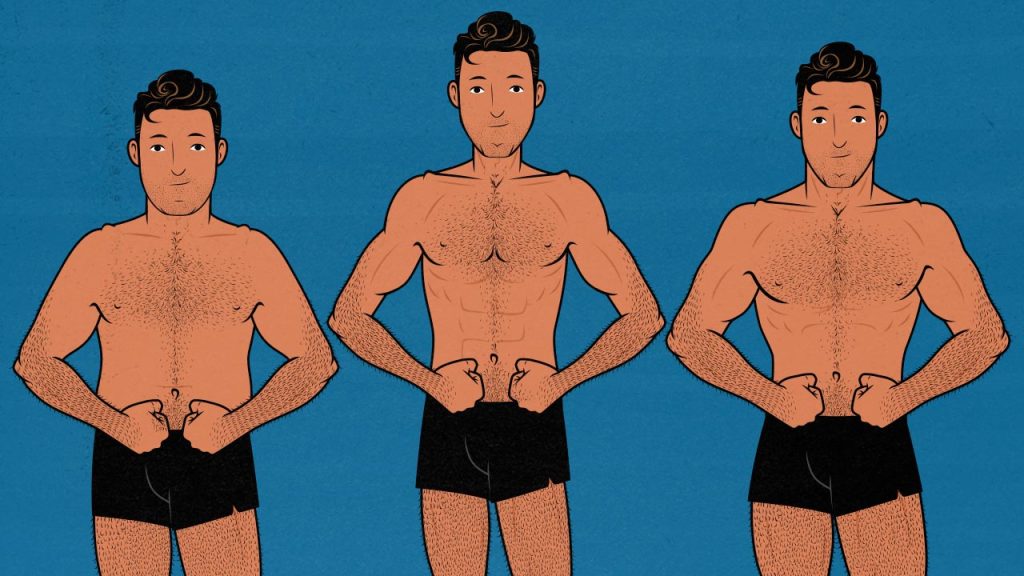
The Male Body Types: Ectomorph, Endomorph, Mesomorph
In bodybuilding and fitness communities, people commonly use the terms endomorph, mesomorph, and ectomorph when talking about male body types. Endomorphs are purportedly stockier and chubbier, mesomorphs are said to be broader and more muscular, and ectomorphs are supposedly thinner and leaner.
Or that’s what people say, anyway. Men do have varying heights and bone structures, and have different propensities for being overweight or underweight, but do these traits really combine together to form three distinct body types? Is it correct to call a naturally skinny guy an ectomorph?
And even if we do use these slang terms to sort people into different body types, do the different body types benefit from different diets and workouts? For example, is there such a thing as an ectomorph workout or an ectomorph bulking diet? Or do all body types benefit from the same workouts, diets, and lifestyles?
Video Version
If you prefer watching a video to reading an article, we’ve got you covered. I go over the history of the somatotypes while debunking the common complaints you’ll hear from other YouTube hypertrophy experts, such as Jeff Nippard, Dr. Mike Israetel, and Natural Hypertrophy.
For the record, those channels are totally rad. Jeff Nippard has my favourite YouTube channel of all time, Mike Israetel puts out great content, and Natural Hypertrophy is the philosopher king of YouTube. But disagreeing with good arguments is far more interesting than disagreeing with bad ones, and there’s far more to be learned that way.
If you’d prefer to read, read on!
Are the Male Body Types Real?
As we’ve alluded to above, there’s a lot of skepticism about sorting people into the three body types. And rightly so. The terms originated in discredited research. They aren’t scientific terms.
In the 1940s, a psychologist named William Herbert Sheldon sorted men into three distinct body types. He called these male body types somatotypes:
- Endomorphs: Men with a sturdy, rounder bone structure: wider hips, stocky limbs, and a barrel-shaped ribcage.
- Mesomorphs: Men with a broader, more triangular bone structure: narrower hips and broader shoulders.
- Ectomorphs: Men with a slighter, more rectangular bone structure: longer limbs, thinner bones, and a flatter ribcage.
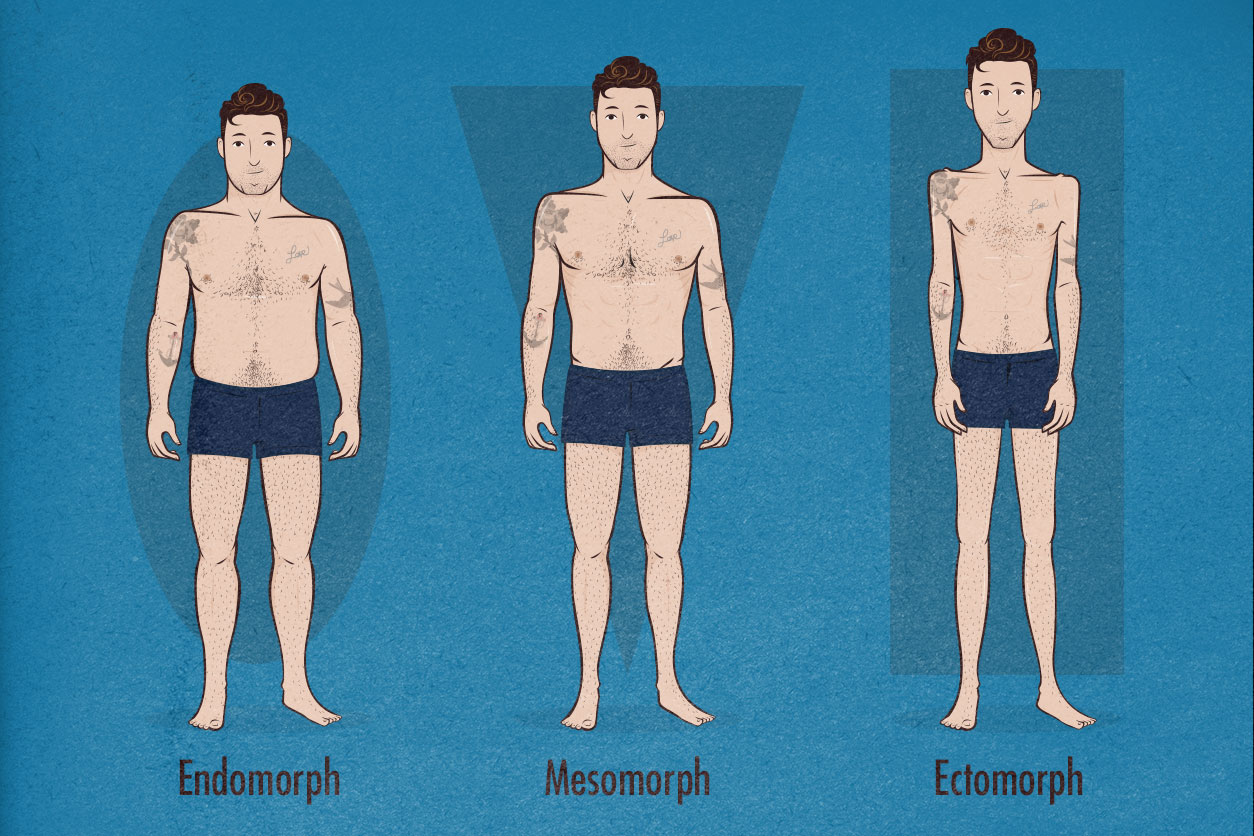
Nothing too radical so far. You’ve surely noticed that different people are, well, different. You may struggle to gain weight while your friend struggles to lose it. Going deeper, you may have smaller wrists, shorter collarbones, or a thinner ribcage. People come in all kinds of shapes and sizes. That’s not in dispute.
But that’s not all Sheldon did. He went far beyond analyzing physical traits. He organized men into these three body types so that he could link them to personality types. For example, he thought that:
- An athletic mesomorph body type made men more adventurous.
- A skinny ectomorph body type made men more intellectual.
- A stocky endomorphic body type made men more affectionate.
Not surprisingly, Sheldon was accused of just rattling off common stereotypes. A 1989 study by Ryckman et al found that we tend to assume that fat people spend too much time eating and too little time moving, that fit people are more confident and capable, and that skinny people must be intellectuals who forget to eat.
Or perhaps Sheldon was just noticing the differing fitness levels are associated with different interests. For instance, it’s not that farfetched to think that people who get lost in deep intellectual activities may sometimes forget to eat, giving them a thin ectomorph body type. That’s not why most ectomorphs are skinny, but I can see how someone might think that.
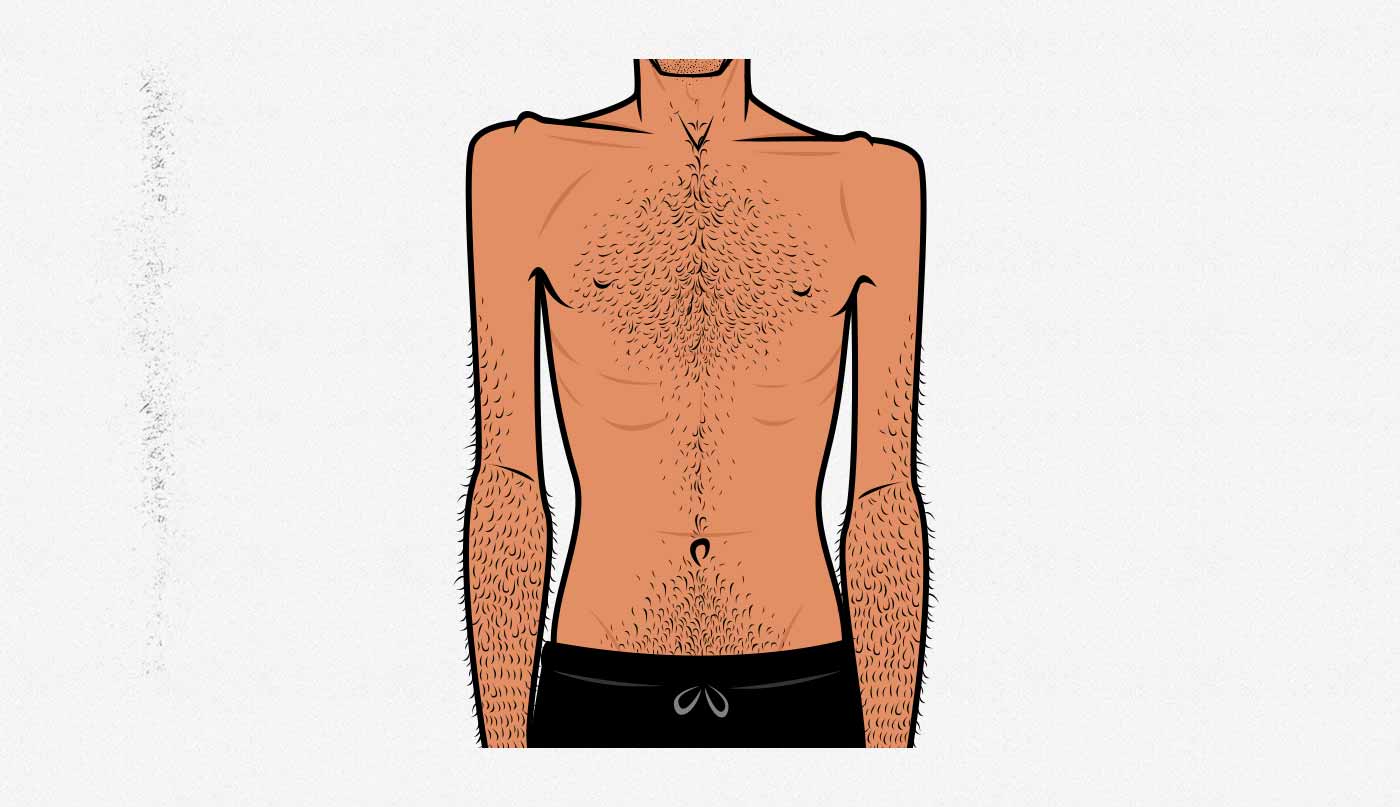
Regardless of his reasoning, though, the psychological side of his somatotype research didn’t pan out. His hypothesis was refuted. Nowadays, somatotypes are just used to describe someone’s physical characteristics—especially those that are genetic. And in that sense, the three body types make sense. Certain clusters of characteristics do go together.
As a result, you’ll never hear the somatotypes mentioned in psychology research. However, you’ll often hear them mentioned in bodybuilding research. For instance, the leading hypertrophy researcher Brad Schoenfeld, PhD, says that “those who are endomorphs typically do better with slightly lower calories, while those who are ectomorphic usually need a higher energy intake; as much as 25 calories per pound for extreme hardgainers.”
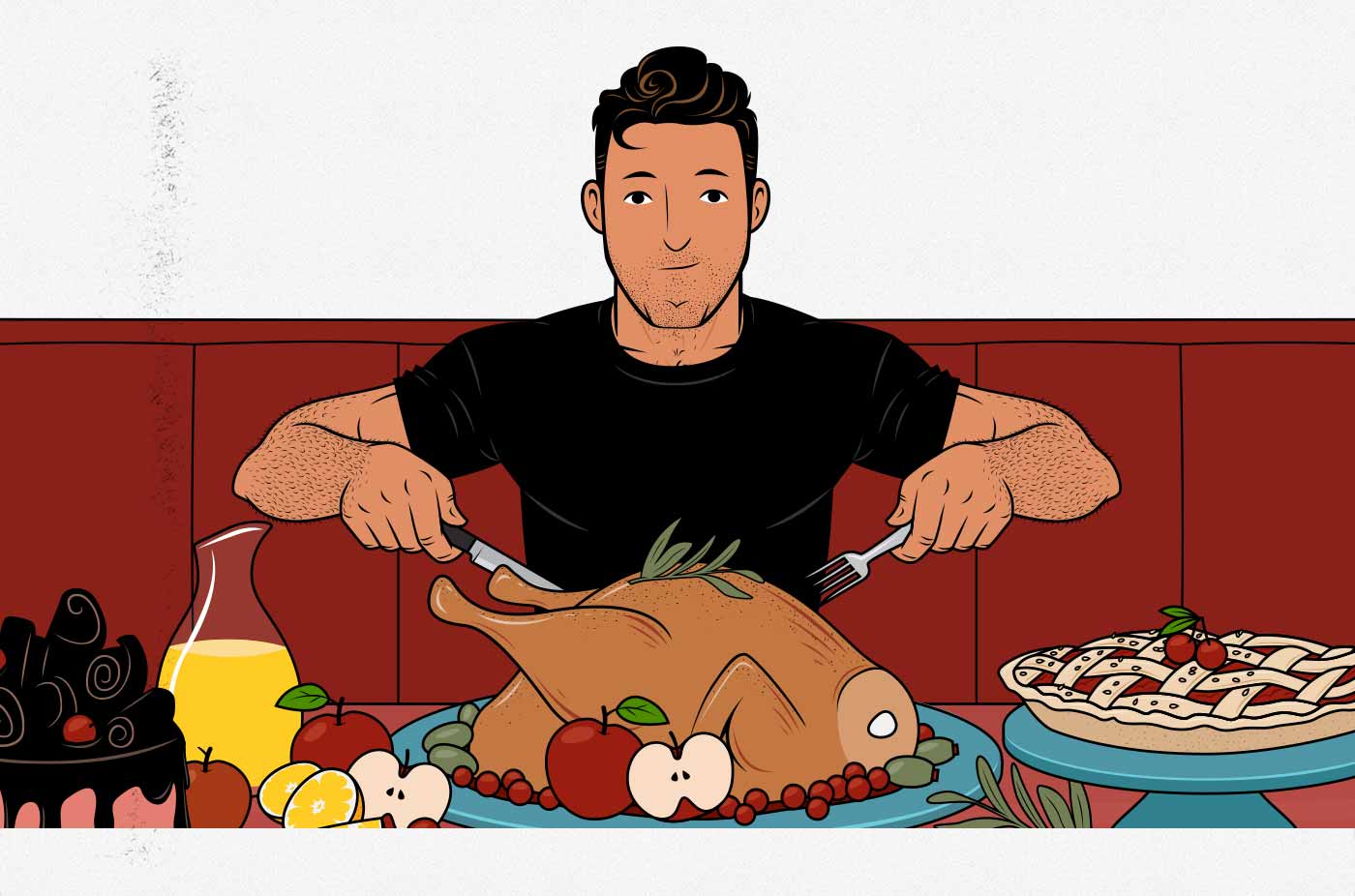
This kind of advice is fairly common, too. Ectomorphs will often be told to “just eat more” if they want to bulk up, but us so-called “hardgainers” often struggle to gain weight. Endomorphs, on the other hand, tend to be overweight. They’ll be told to “eat less, move more” if they want to lose weight, often finding that advice equally difficult to follow. If you tried to put those same body types on the same diet, they’d both hate you. The interesting thing, though, is that they’d hate you for the opposite reasons.
Now, does this mean that endomorph, mesomorph, and ectomorph are scientific terms? No, but it does mean that body types are often used in bodybuilding and fitness communities as a way to talk about people with differing genetics, struggles, and goals. What’s interesting is that these traits really can cluster together. There really are “ectomorphs” with thinner bones, less muscle mass, less fat, and who are eager to bulk up but struggling to eat enough. I know this because I am one. When I read the description of an ectomorph, I felt like I finally had a word to describe myself.
The next question is why? Why do these characteristics so often cluster together?
What Defines Our Body Types?
Imagine a man with a stockier torso. That roomier torso allows for a bigger stomach. That bigger stomach mean that they can eat more food before becoming full. This describes the thicker endomorph body type, and it explains why endomorphs tend to be overweight. The characteristics cluster together.
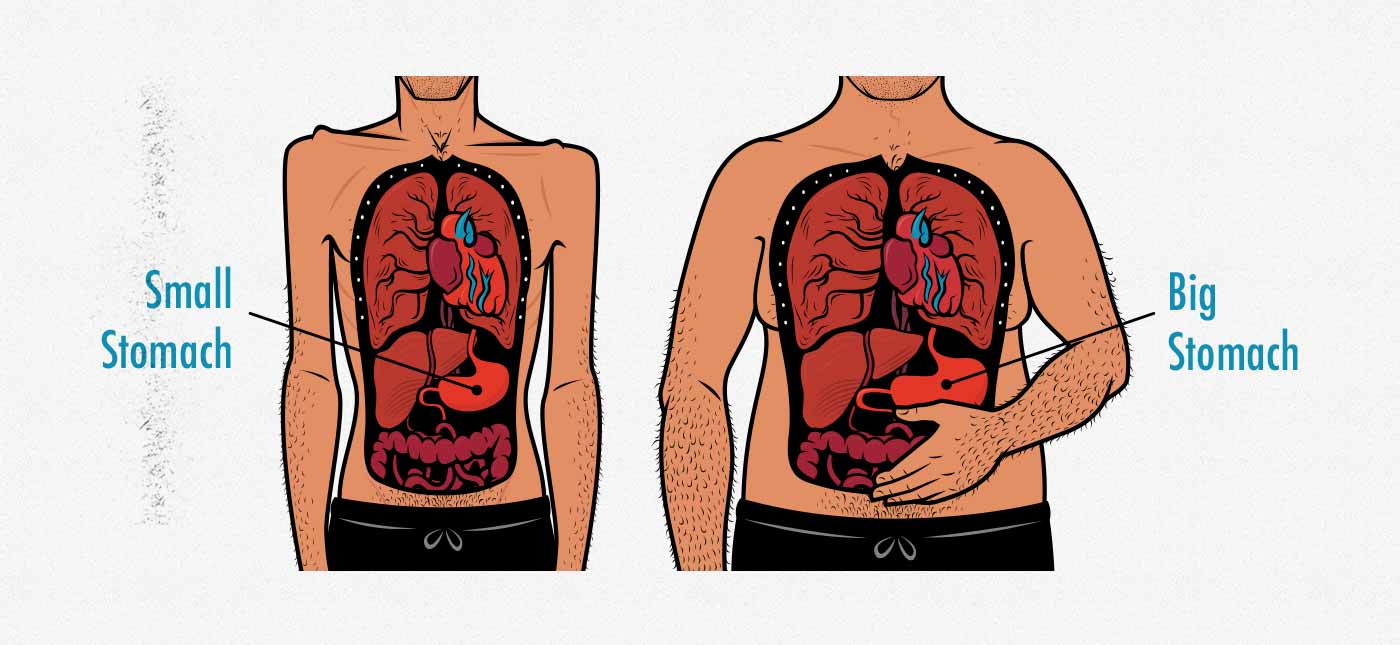
Now imagine a man with a thinner torso. That thinner torso still needs to house all the same vital organs, which leaves less room for his stomach, making it harder to eat big meals. Their thinner torso also radiates more body heat, giving him a higher metabolism. This makes him naturally leaner, meaning that he gets less insulation from body fat, which raises his metabolism even higher. This guy’s thinner build is going to mean that he has a harder time eating enough to gain weight. This cluster of characteristics describes the stereotypical ectomorph body type.
The clusters of body-type characteristics go deeper, too.
For example, as someone grows taller, you would expect our mass to scale with the cube of our height, but Adolphe Quetelet, a renowned statistician, defined our body mass index (BMI) as our weight divided by the square of our height. This reflected his observation that taller guys are often more slim than average, whereas shorter guys are often stockier. We’ve since discovered that neither the cube nor the square of our height predicts how our mass changes as we grow taller. It’s probably something in the middle (study).
This means that shorter guys tend to be stockier and with proportionally larger heads. This describes the short and stocky endomorph body type. Taller guys, on the other hand, tend to get their extra height from their lanky arms and legs, and their long torsos. This describes the long and lanky ectomorph body type.
You can see how proportions can differ here, comparing 5’6 endomorph Ed Coan with the 6’6 ectomorph Michael Jordan:
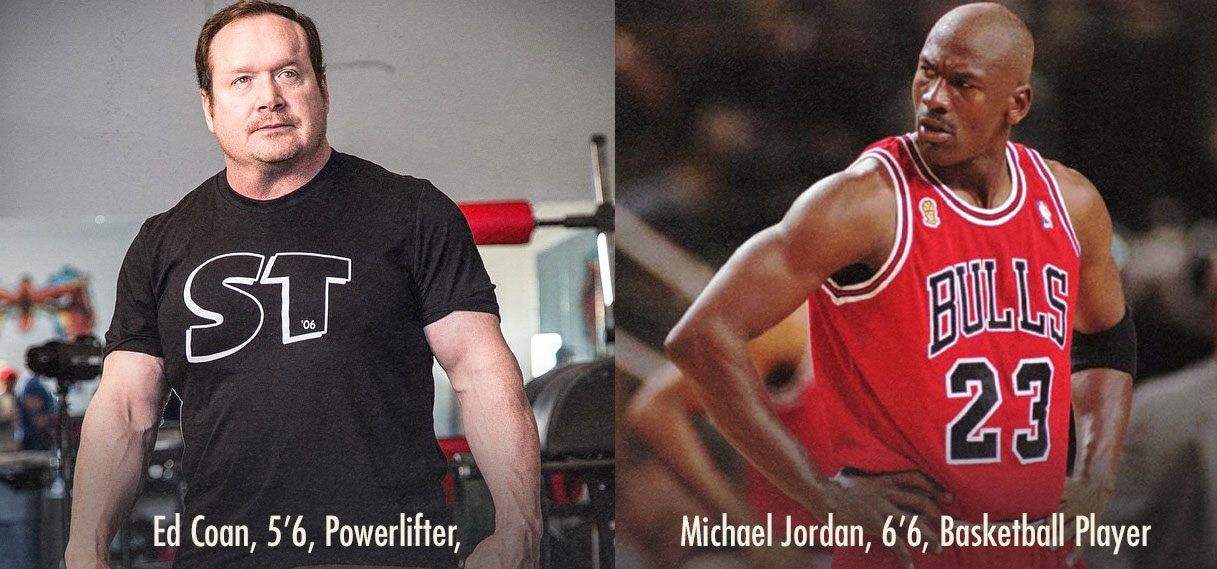
As you can imagine, both of these guys have very different strengths and weaknesses due to their opposite body types. Ed Coan’s stocky body type helped him become one of the best powerlifters in the history of powerlifting. Michael Jordan’s lankier body type helped him become one of the best basketball players of all time.
The Heath-Carter version of Sheldon’s somatotypes, which just uses someone’s physical characteristics, is now the most respected way of classifying body shape. Moreover, it’s been seventy years since Sheldon coined the terms endomorph, mesomorph and ectomorph, and they’re still widely regarded as one of the key things every guy needs to know before attempting to build muscle or lose fat. After all, the better we understand our differences and similarities, the easier it will be for us to adjust our workouts, diets, and lifestyles in a way that helps us accomplish our distinct goals.
Even so, as we go through the three body types, keep in mind that most people are a combination of a couple of different body types, if not all three. 7,1,1 refers to a pure endomorph. 1,7,1 refers to a pure mesomorph. 1,1,7 refers to a pure ectomorph. I was especially skinny so I like to think that I was a 0,0,7 ectomorph, but any combination of numbers is possible.
The Endomorph Body Type
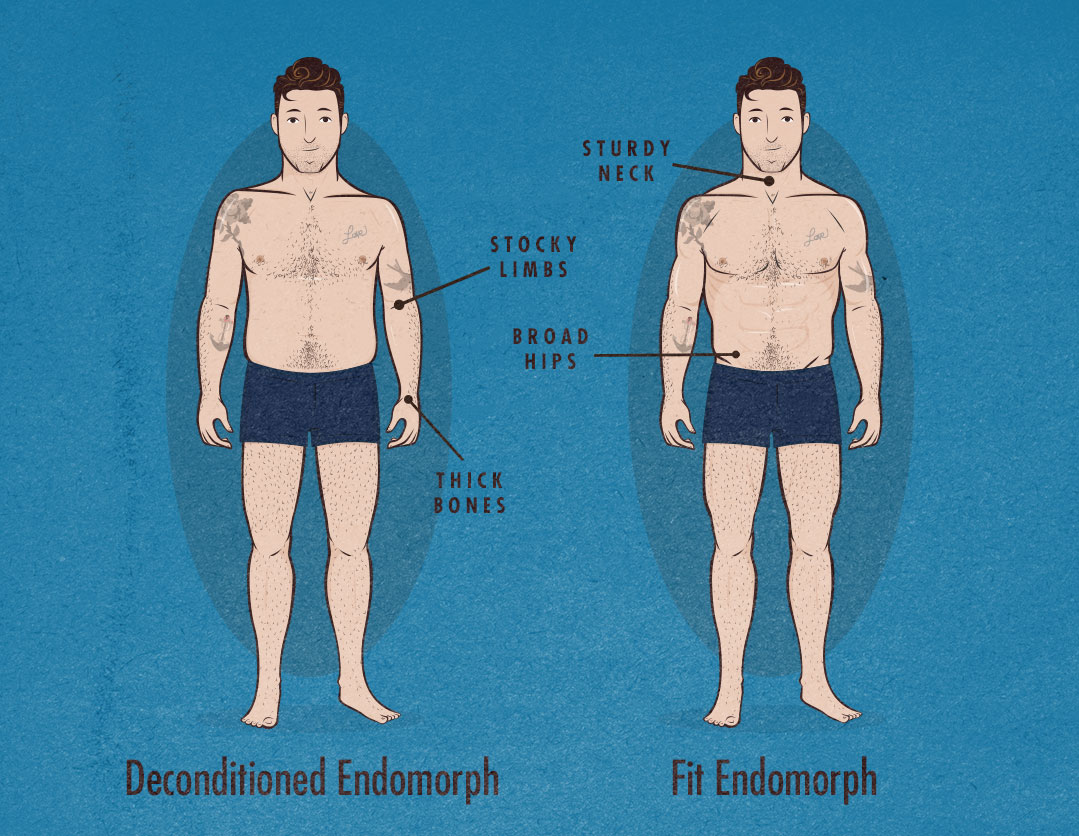
Endomorphs are stocky, heavy guys with wider hips, shorter limbs, thicker bones and rounder body shapes. Their shorter limbs often put them on the shorter side, but not always. It also seems like being proportionally heavier causes the body to develop thicker bones in order to support the extra weight, especially in the lower body (study). This is a possible explanation for why endomorphs have stockier, more bottom-heavy physiques.
The Endomorph Workout
Should Endomorphs Do Cardio?
Cardio is popular for a reason. It’s an effective way to burn calories, and calories are the mortal enemy of many endomorphs. But being proportionally heavier can make many cardio activities rougher on endomorphs. If an endomorph goes out for a jog, there’s a lot of weight landing on their joints with every footfall. If the stress of running is hurting your joints, oftentimes lower-impact forms of cardio, such as biking, ellipticals, or going on long walks, can make for a better choice, at least until your joints are tough enough to handle more running.
Most health experts recommend doing around 150 minutes of cardio per week, but keep in mind that this can include casual forms of cardio, such as going on brisk walks, as well as weight training.
Should Endomorphs Do Strength Training?
Endomorphs often excel at strength sports. Having a sturdy and stocky build tends to make endomorphs quite good at strength training and powerlifting. Their crocodile-like proportions make for great lifting leverages and reduce the range of motion of most lifts, such as the bench press and squat.
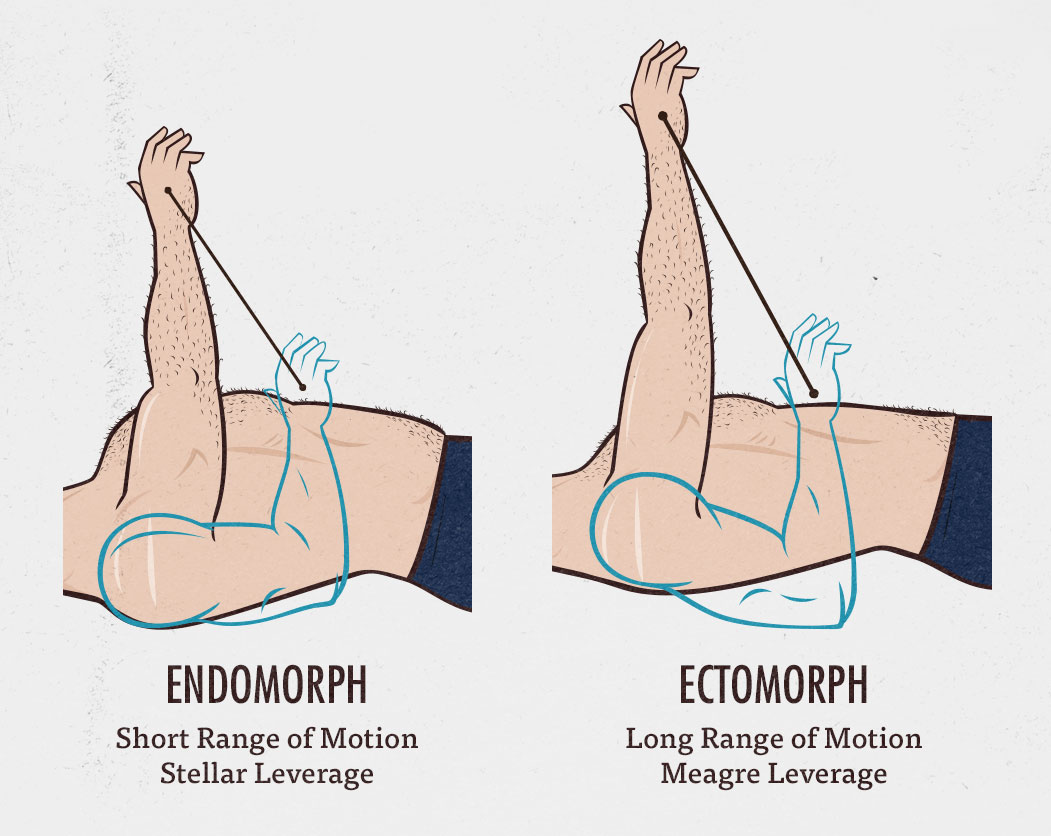
Endomorphs tend to be defined by having thicker, denser bones, too, allowing them to more safely support heavy loads. Lifting weights only makes their bones even harder and tougher, furthering that genetic advantage.
Now, is heavy strength training the best way to build muscle, lose fat, or improve our general health? Not necessarily. Most strength training routines are rooted in powerlifting, emphasizing training in lower rep ranges (<6 reps per set) to make us stronger for our size. That’s a less efficient way of stimulating muscle growth, it burns fewer calories, and it doesn’t tax our cardiovascular systems as much. When training for general health, muscle size, and aesthetics, it’s often better to favour moderate rep ranges, doing hypertrophy training instead of strength training.
Should Endomorphs Do Bodybuilding?
Endomorphs seem to have an easier time building and maintaining muscle mass than other body types. According to the research of Dr. Casey Butts, guys with thicker bones are able to build muscle more easily and ultimately become more muscular than people with narrower bones. For instance, having thicker wrists tends to make it easier to build bigger arms, and having thicker ankles tends to make it easier to build bigger legs. Overall, he found that thick-boned men were able to build around 10% more muscle mass than the average man.
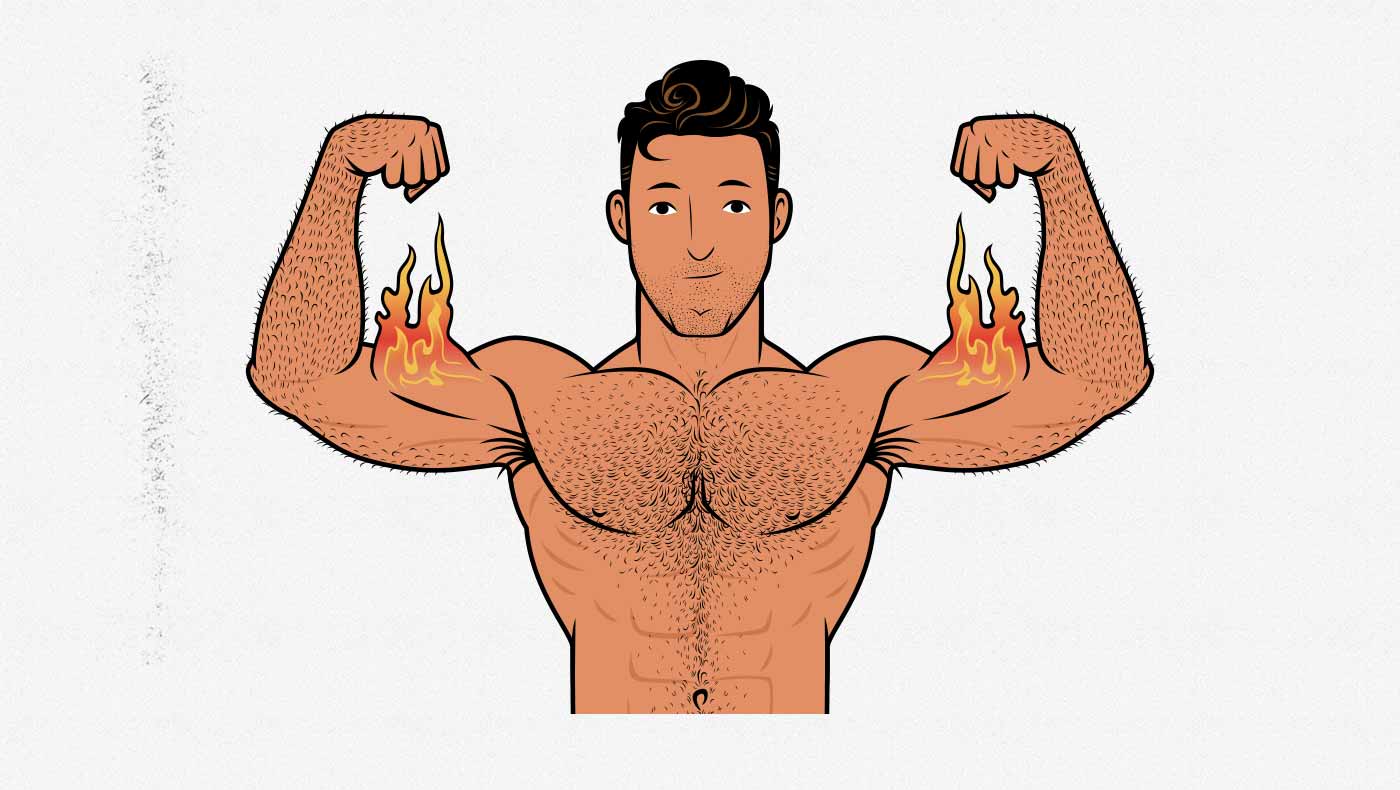
You could argue that having naturally thicker, denser bones and larger muscles removes the need for weight training. After all, some of the main benefits of weight training have to do with improving bone density and muscle strength—something that endomorphs don’t tend to struggle with. But just like everyone benefits from doing cardio, the same is true with weight training. It reduces our risk of heart disease, cancer, and dying for any reason whatsoever (study, study, study). As a result, both the American Heart Association and the American College of Sports Medicine recommend weight training at least twice per week.
Plus, following a rigorous weight training program causes much better improvements in body composition than doing just cardio. For instance, in this six-month study, the participants doing only cardio lost quite a lot of fat, yes, but much of their weight loss was muscle loss:
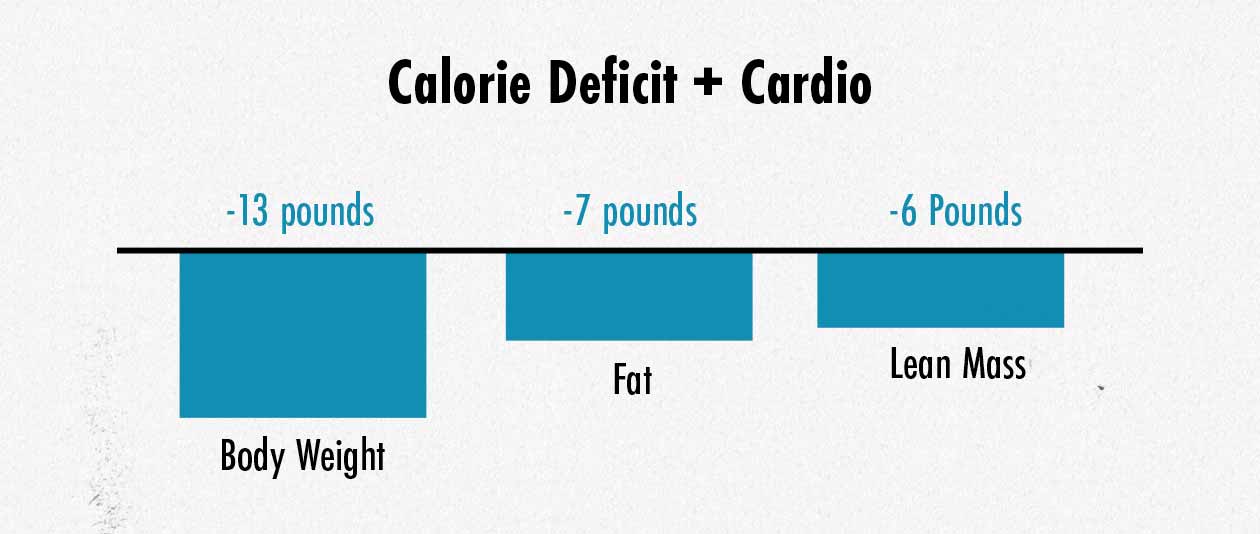
But if we look at the participants who were also weight training, we see that they were losing fat three times as fast and were gaining muscle while doing it. Most impressively of all, they got these results without even improving their diets or incorporating any lifestyle changes.
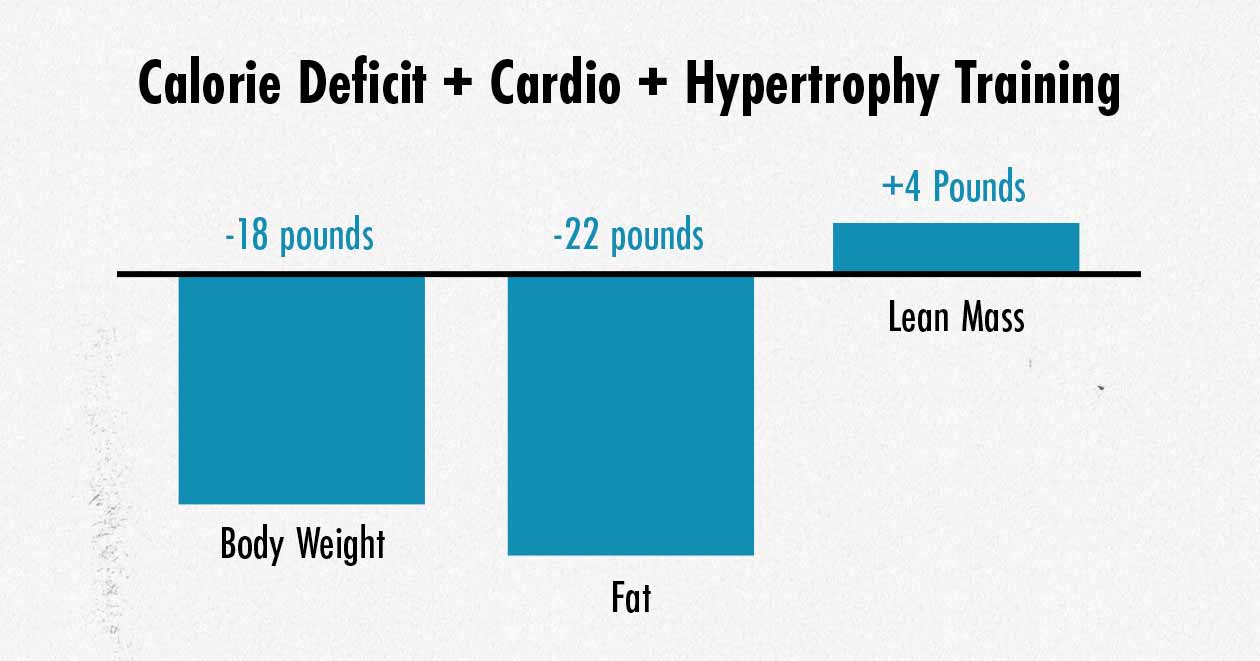
Perhaps best of all, building muscle can also help people maintain their fat loss in the longer term. A pound of fat burns around two calories per day, so with every pound of fat that we lose, our metabolisms slow, and so our diets must become more strict. This can lead to yo-yoing in and out of leanness.
If we can build muscle, though, we can offset this drop in our metabolisms. A pound of muscle burns approximately six calories per day, meaning that we can prevent our metabolism from dropping if we build a pound of muscle for every three pounds of fat that we lose. Depending on how overweight a person is, that might not be realistic, but even so, it’s usually helpful to build as much muscle as possible while losing weight.
Finally, it takes around 2,000 calories to build a pound of muscle, so for every pound of muscle we can build while losing fat, our calorie deficit is driven deeper, meaning 0.5–1 pound of extra fat loss. As a result, most studies show that people lose fat far faster if they train for muscle growth while dieting.
Endomorph Workout Recommendations
The best way for an endomorph to improve their general health, build muscle, lose fat, and improve their appearance is to do 2–3 cardio workouts per week in addition to 2–3 weight training workouts.
When choosing your form of cardio, go with your preferences. Keep in mind that low-impact cardio, such as biking and walking, can be easier on our joints. When choosing your weight training program, keep in mind that hypertrophy training (aka bodybuilding) tends to be better than strength training for improving muscle size, body composition, and general health.
The Endomorph Diet
It’s common for endomorphs to feel like they have slower metabolisms, insatiable appetites, and a lower tolerance for carbohydrates. Is that true? Maybe.
In terms of our metabolisms, there’s research showing that some people gain more fat when eating in a calorie surplus than others. For instance, in this study, the participants were overfed by a thousand calories per day for eight straight weeks and instructed not to exercise. Eight weeks later, the participants had gained anywhere between 0.79 pounds up to 9.3 pounds. This shows that there’s quite a lot of genetic variance in how our metabolisms respond to calorie surpluses.
It also seems like endomorphs have proportionally larger stomachs, meaning that they might be more inclined to eat larger meals, making it easier to get into that calorie surplus in the first place.
To make things easier, endomorphs may want to primarily eat foods that are filling, rich in micronutrients and low in calories. Minimally processed foods that are higher in protein, fibre, and water are good for that. Chicken breast is an example of a food that’s filling because it’s rich in protein and water. Broccoli is an example of a food that’s filling because it’s rich in fibre and water. Processed sugar isn’t filling because all the fibre and water is processed out, whereas a fruit, with its sugar bundled up in plant cells alongside fibre and water, is quite satiating (study).
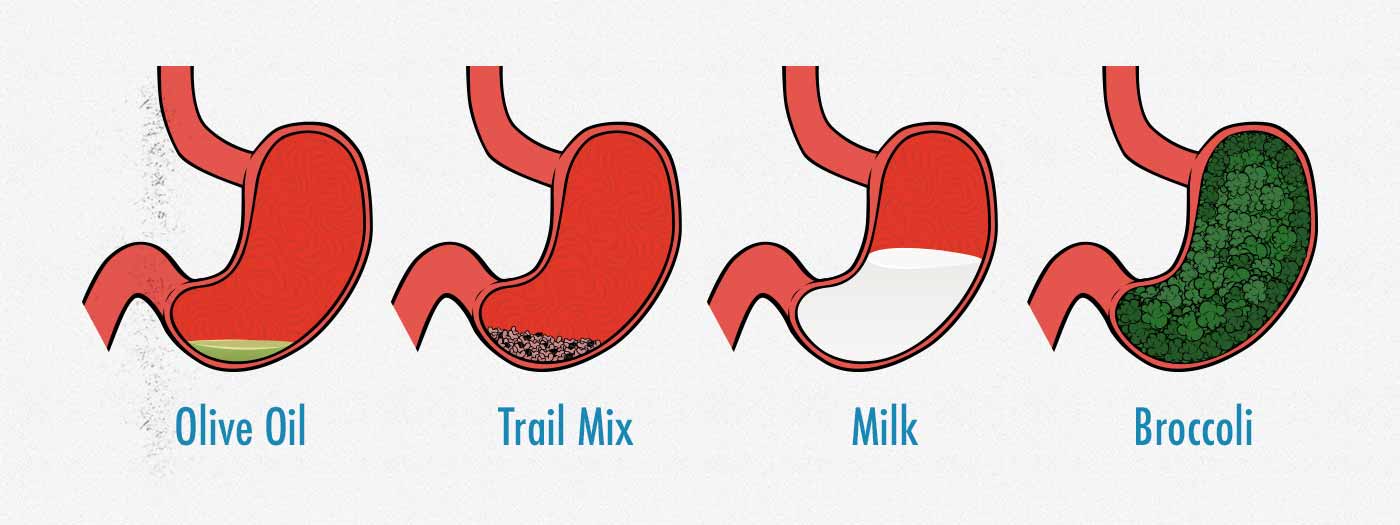
And here lies the secret to every pop-culture diet. Cupcakes, french fries, and chips are very high in calories for how filling they are, so they’re shunned. Apples, carrots, green veggies, and white fish, on the other hand, all contain a lot of micronutrients and hardly any calories at all—far better. This allows endomorphs to feel fuller on fewer calories while still getting all the vitamins, minerals and fibre that they need.
That means that most pop-culture diets are at least somewhat effective for helping people lose weight. None of them are magical, and most of them aren’t particularly evidence-based, but many of them are viable for people who prefer them.
Intermittent Fasting
Intermittent fasting (or time-restricted feeding) is a diet where instead of limiting what you eat, you limit when you eat. Instead of eating foods that are more filling per calorie, you choose a meal schedule that leaves you feeling fuller on fewer calories. Mind you, you’ll still want to combine intermittent fasting with a diet that’s rich in protein and low in processed foods.
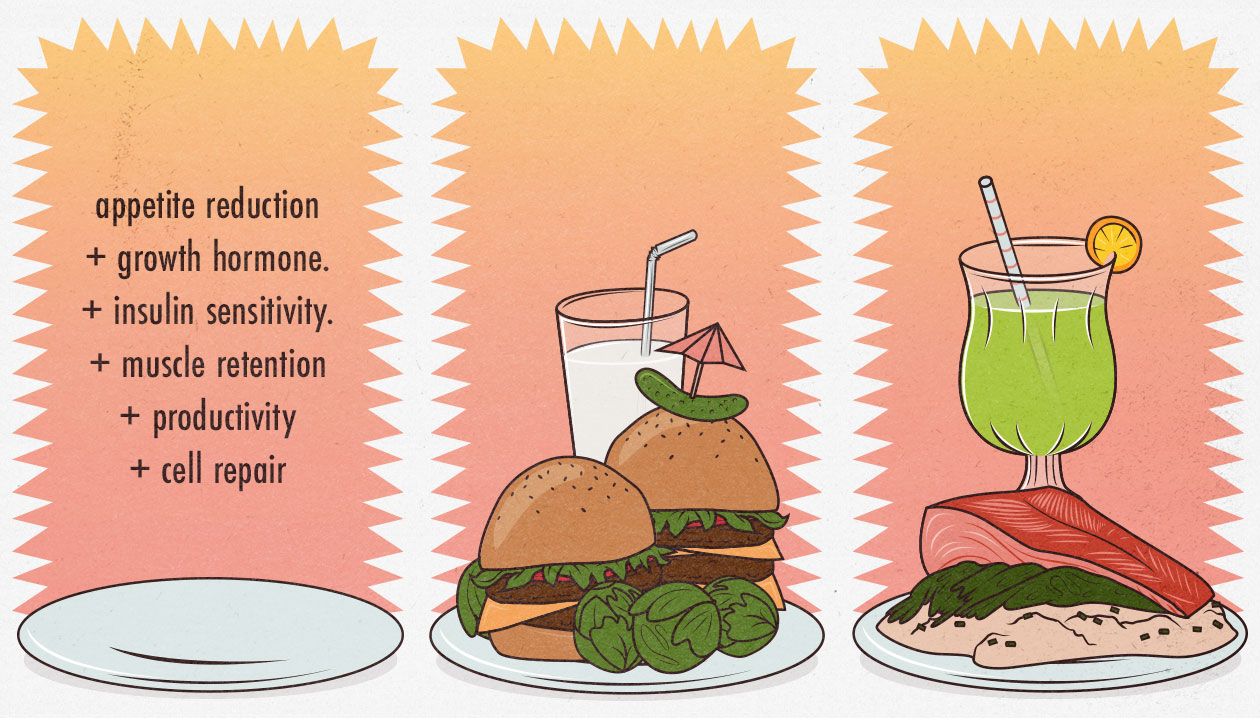
For example, 16:8 intermittent fasting is a type of intermittent fasting where you fast for sixteen hours, and then have an eight-hour feeding window. Most people do this by having just coffee or tea instead of breakfast. A pound of fat contains around 3,500 calories, so if an endomorph typically eats 500 calories for breakfast, this allows him to lose up to a pound of fat per week simply by skipping breakfast.
Intermittent fasting isn’t magical. It’s not the only effective way to lose fat. It’s not even the most effective way to lose fat. But some people find that it makes dieting easier and more pleasant. In fact, a systematic review of 40 studies found that people who start intermitting fasting typically lose 7–11 pounds during their first ten weeks.
The Ketogenic Diet
Ketogenic “keto” diets are extremely low-carb diets. Our bodies normally default to using carbohydrates for fuel, but if we remove carbs from our diets, it forces our bodies to switch over to using fatty acids for fuel. This process is called ketosis, and it’s often thought to be good for losing fat.
The idea of being able to efficiently burn your body fat for energy sounds exciting. However, since the ketogenic diet involves consuming more fat as well, you’ll also be storing more body fat. The extra fat loss is cancelled out by the extra fat storage, leaving a largely neutral effect on overall fat loss.
But where the ketogenic diet truly shines is in its ability to suppress our appetites (meta-analysis). If you’re an endomorph with a naturally larger appetite and stomach, this can make it easier to get into a calorie deficit, and thus help you lose weight. Since the ketogenic diet also tends to have a higher-than-average protein intake, this can also help with muscle retention. (Although to be clear, the ketogenic diet isn’t ideal for building muscle.)
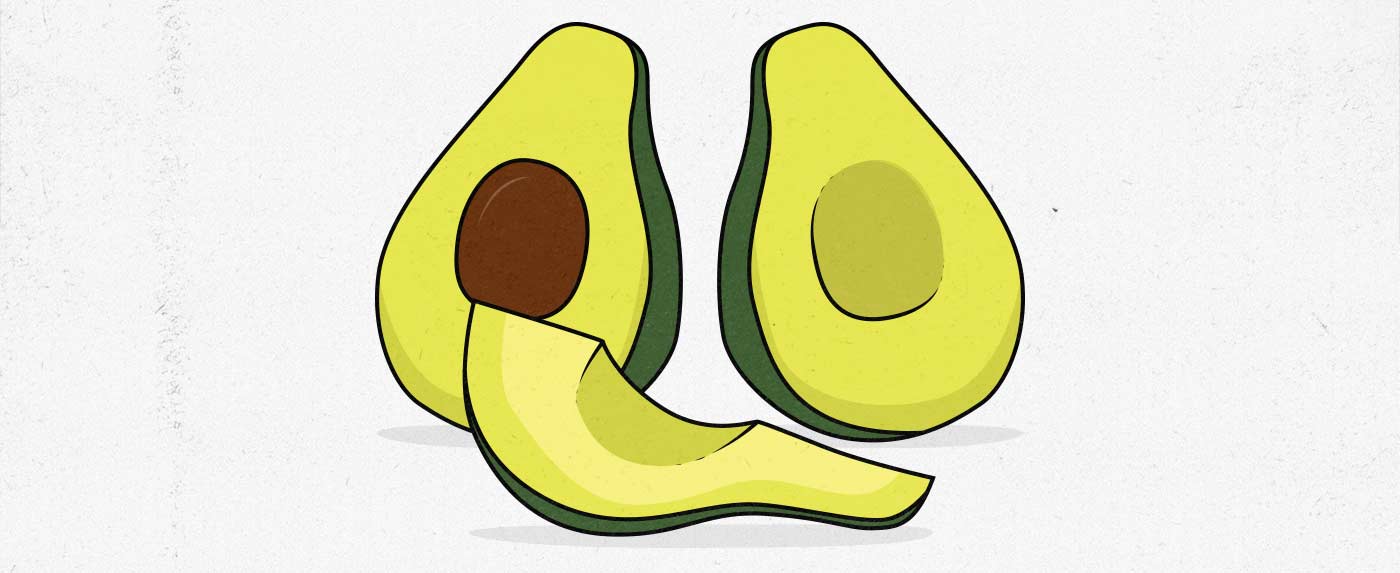
To make the most of the appetite-suppressing effects of the ketogenic diet, shy away from processed foods, eat tons of salads and veggies, consume plenty of nuts (such as almonds), and, of course, eat plenty of avocados (which seem to be the official mascot of the ketogenic diet).
Plant-Based Diets
Just to illustrate how many different ways to lose weight there are, let’s talk about the opposite of the ketogenic diet: a vegan diet. Just like ketogenic diets and intermittent fasting, vegan diets are also associated with weight loss (study). Again, it’s not that animal products cause weight gain or that plant-based diets are superior for burning fat, it’s that restricting food groups can often suppress appetite, causing us to eat fewer calories, and thus causing weight loss. This is why so many seemingly contradictory diets all cause weight loss (study, study).
If you want to emphasize weight loss, then, it becomes important to choose foods that are filling, such as fibrous veggies, legumes, whole grains. It also helps to consume plenty of protein, which will help with muscle retention, and to supplement as needed to avoid nutrient deficiencies (as explained in our plant-based muscle-building guide).
The Importance of Protein
Regardless of which diet we follow, it’s important to eat enough protein. For example, in this study, all of the participants were put on a workout program and instructed to eat in a calorie deficit. Half of them ate 0.5 grams of protein per pound bodyweight per day (an average amount of protein) whereas the other half were instructed to eat a gram of protein per pound bodyweight. For a 200-pound man, that’s the difference between eating 100 grams versus 200 grams of protein per day.
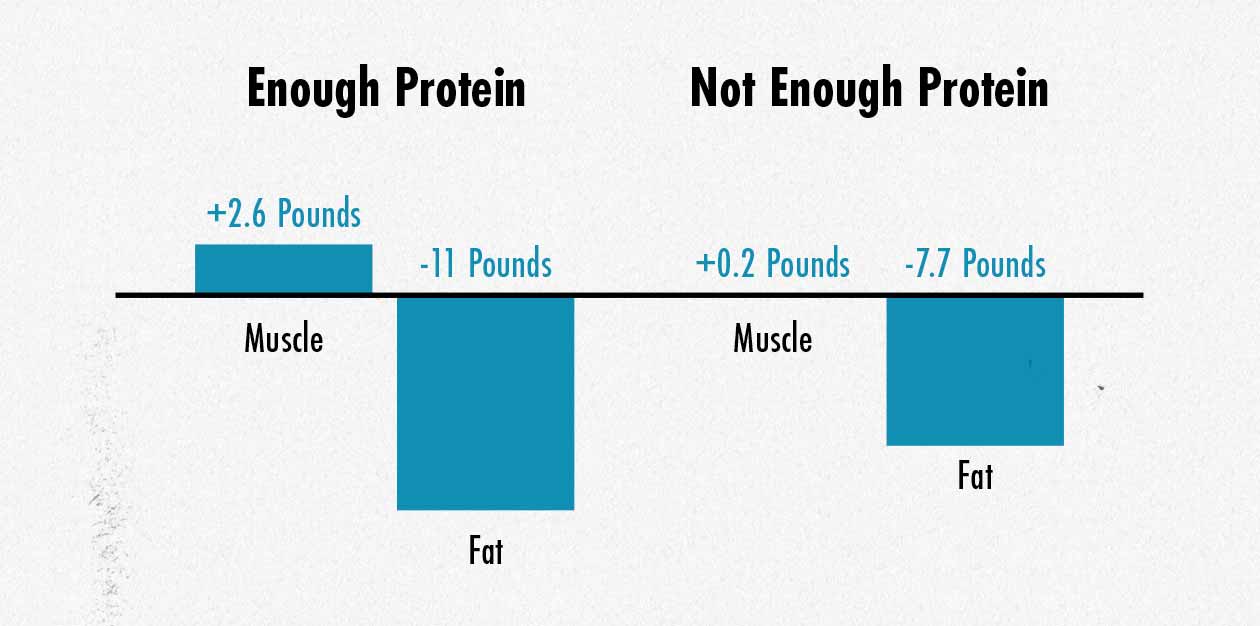
A month later, the participants who were eating less protein lose quite a bit of fat but failed to gain any muscle. The group who was eating plenty of protein, though, lost 40% more fat while gaining 2.6 pounds of lean mass. Eating more protein allowed for simultaneous fat loss and muscle gain—body recomposition.
Another advantage to eating more protein is that protein tends to be quite filling, especially when it’s chewy. For instance, chicken breast and lean cuts of steak are some of the most filling foods per calorie.
Finally, protein causes us to burn more calories than the other macronutrients due to a phenomenon called the thermic effect of food (study, study).
- If we eat 1000 calories of fat, our bodies burn off 15 calories as heat.
- If we eat 1000 calories of carbs, our bodies burn off 75 calories as heat.
- If we eat 1000 calories of protein, our bodies burn off 250 calories as heat.
This means that diets that are higher in protein cause us to burn more calories, lose more fat, build more muscle, and feel more full. For an endomorph that’s struggling to lose weight and improve their body composition, eating more protein can be a real help.
Endomorph Macros
What are the best macros for an endomorph who’s trying to lose weight? There’s no single best answer to that question. When trying to lose weight, the most important macronutrient is protein. As we covered above, it’s incredibly important to eat enough protein. But beyond that, our ratio of carbs and fat is much less important.
We don’t really need to worry about our macros, per se, we just need to make sure that we’re eating a gram of protein per pound bodyweight per day, we’re eating in a calorie deficit, and we’re losing weight on the scale each week. If you prefer carbs, eat more carbs. If you prefer fat, eat more fat. Both approaches can work.
When in doubt, try to eat a fairly balanced amount of both carbs and fat. Getting a minimum of around 20–30% of our calories from fats is important for nutrient absorption and hormone production, but going higher is fine. Getting as much as 50–60% of our calories from carbs can help with workout performance, muscle fullness, and muscle growth, but that’s mainly done when bulking. Another over around 1 gram of carbohydrates per pound bodyweight per day is great. So for a 200-pound man, that would be 200 grams of carbohydrates, which works out to around 800 calories from carbohydrates per day. But these are very loose recommendations. Feel free to adjust your macros to your personal preferences.
Endomorph Diet Recommendations
Most endomorphs struggle with being overweight. Exercise can help tremendously, especially when cardio and weight training are combined together, but losing weight ultimately comes down to getting into a calorie deficit.
Unfortunately, getting into a calorie deficit is easier said than done. It’s easy to say “just move more and eat less,” but that makes it sound as if it’s easy, and it’s not. That’s why there are so many diets designed to help people lose weight, ranging from intermittent fasting to keto to plant-based diets. All of those diets can work, but regardless of which diet you choose, try to:
- Eat enough protein overall, and preferably some protein in every meal. For building muscle and losing fat, eating one gram of protein per pound of your target bodyweight per day tends to be best. For example, if you’re trying to get down to 190 pounds, you should try to eat 190 grams of protein every day. You don’t need to split that protein evenly between meals, but getting at least 20 grams in each meal can increase muscle growth and help you feel more full.
- Get most of your calories from minimally processed whole foods. There’s no need to totally avoid sugar or treats, but it’s still wise to get around 80% of your calories from whole foods. That will keep your diet rich in nutrients and fibre, and it will make your diet more filling.
The Endomorph Lifestyle
As with all body types, it’s important to combine a clever workout routine and diet with a good lifestyle. There are a number of things that can help, ranging from avoiding stress to spending more time on your feet or outside. One of the most important things, though, is to get proper sleep.
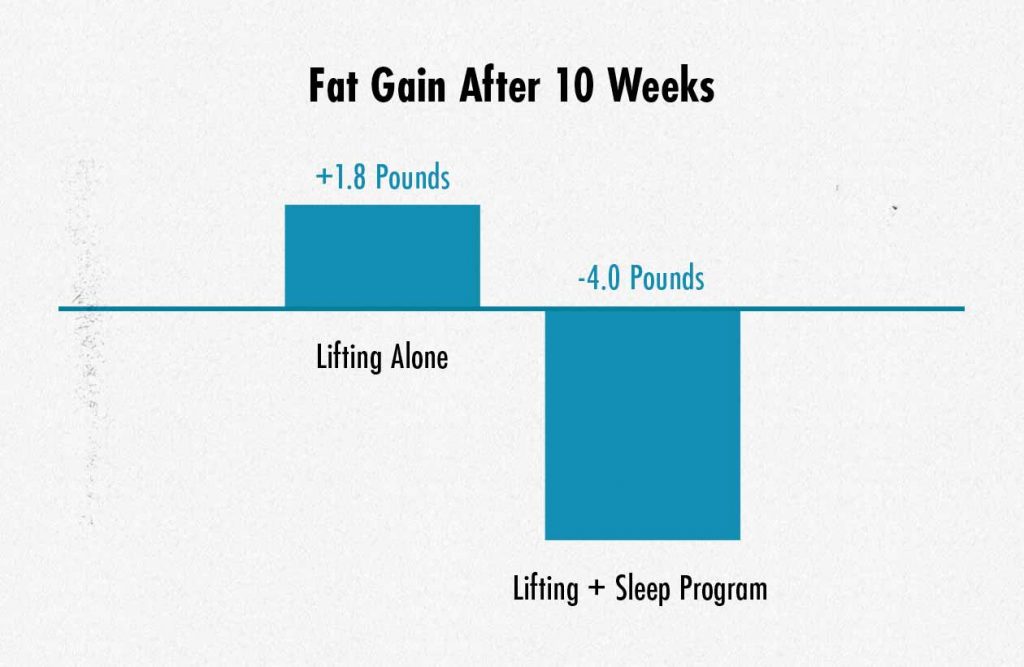
For instance, in this study, the researchers put all of the participants onto a weight training workout routine. All of them built quite a lot of muscle, but the people who were taught how to improve their sleep managed to lose fat at the same time. Plus, not only does improving our sleep help us lose fat, but it also gives us more energy to invest in exercising and more willpower to invest in improving our diets. For more, we’ve got a full article on improving sleep.
The Mesomorph Body Type
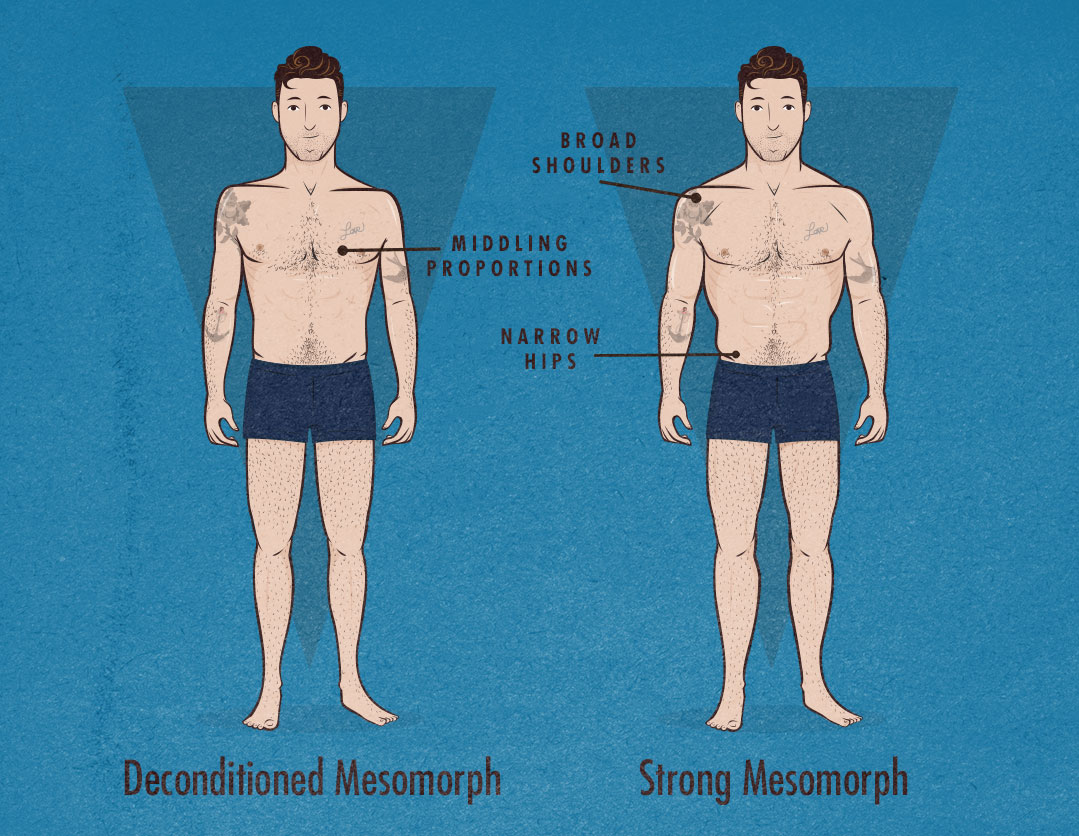
Mesomorphs are athletically built men with broad shoulders, narrow hips, and triangular body shapes, perhaps from having more testosterone shaping them as they go through puberty. Mesomorphs are known for being naturally leaner and more muscular than the other body types, again possibly due to having naturally higher testosterone levels shaping them.
The mesomorph is also defined by being neither as stocky as an endomorph nor as slender as an ectomorph. This gives them some of the strengths and weaknesses of both body types. However, there may be benefits to being a man of middling height and proportions. For example, a 2015 study by Li Xiaoxin found that men of average height (5’9–5’11) had better coordination than guys who were shorter or taller (study).
What’s the Best Workout for Mesomorphs?
Mesomorphs are known for having thick enough bones to support quite a lot of muscle growth, but another advantage comes from having a good balance between muscle bellies and tendons. This can make them well suited for a variety of different types of exercise. They may particularly excel at Olympic weightlifting, where having a huge shoulder-to-waist ratio was found to be a strong predictor of success (study).
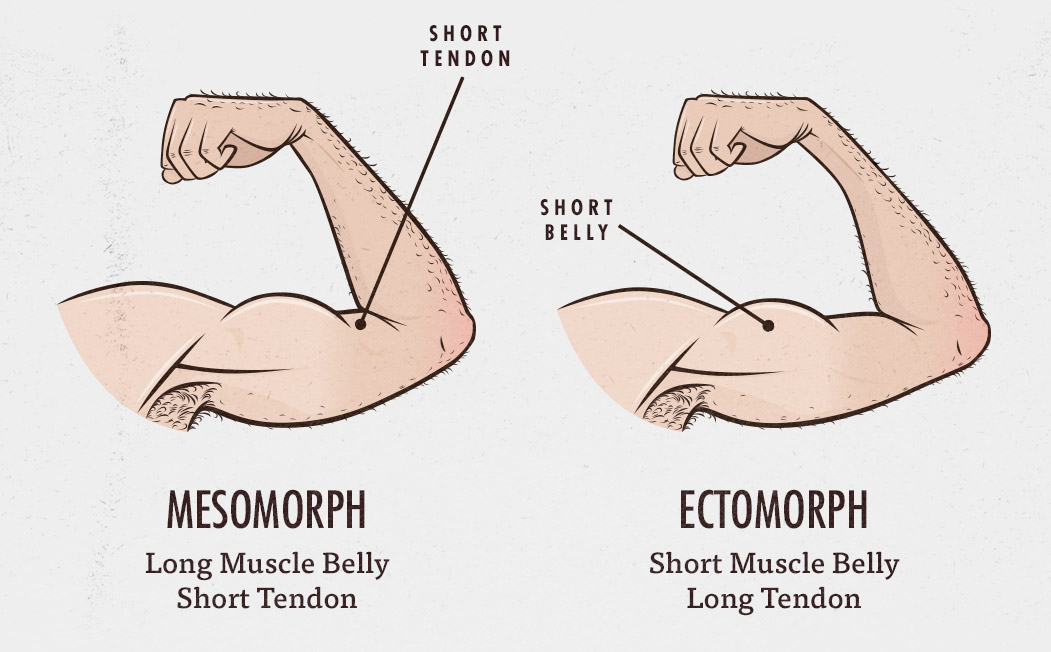
As with endomorphs, it’s a good idea for everyone to do a mix of cardio and weight training. Not everyone needs to choose their workout program based on what builds the most muscle or burns the most fat. For naturally leaner and more muscular men, it may not be needed. It might be better to choose a form of exercise that’s enjoyable and sustainable.
That can include high-intensity cardio-oriented programs like CrossFit or strength-oriented approaches like powerlifting. But, as with the other body types, if a mesomorph is trying to build a lean and muscular body, they’ll still want to choose a program that’s designed for muscle growth. Hypertrophy training is best for that.
What’s the Best Diet for Mesomorphs?
There’s no single best diet for a mesomorph. The most important thing is eating a diet that’s rich in protein and made up mostly of minimally processed whole foods. Different people prefer different approaches, ranging from the Mediterranean diet to keto to Paleo. And, of course, most diets don’t have names.
However, different diets can help us accomplish different goals. If you’re interested in building muscle, you might want to eat a traditional bulking diet. If you’re interested in losing fat, you might want to experiment with calorie-restriction techniques like intermittent fasting.
If a mesomorph is interested in getting leaner, they’ll want to eat a fat-loss diet like an endomorph. If a mesomorph is interested in building muscle, they’ll want to eat a bulking diet like an ectomorph.
Mesomorph Macros
A variety of different macronutrient intakes can be effective, but if we had to generalize, mesomorphs respond best to a fairly balanced diet with fairly balanced macros: around 40% of calories coming from carbs, 30% from protein, 30% from fat. No need for precision there, though. So long as you consume enough protein—around 0.8–1 grams per pound bodyweight per day—then you don’t need to worry too much about balancing your carb and fat macros.
Mesomorph Diet Recommendations
Mesomorphs have a variety of different preferences and goals. To build muscle, a bulking diet is best. To lose fat, a cutting diet is best. And there are different variations of each diet. And, of course, nothing says that you need to bulk or cut.
If you want to build muscle, lose fat, and be generally healthy, there are two factors that generally produce the best results:
- Eat enough protein overall, and preferably some protein in every meal. For building muscle and losing fat, eating 0.8–1 gram of protein per pound bodyweight per day is usually best. For example, if you weigh 190 pounds, you should try to eat 190 grams of protein every day. You don’t need to split that protein evenly between meals, but getting at least 20 grams in each meal can increase muscle growth and help you feel more full.
- Get most of your calories from minimally processed whole foods. There’s no need to totally avoid sugar or treats, but it’s still wise to get around 80% of your calories from whole foods. That will keep your diet rich in nutrients and fibre, and it will make your diet more filling.
The Ectomorph Body Type
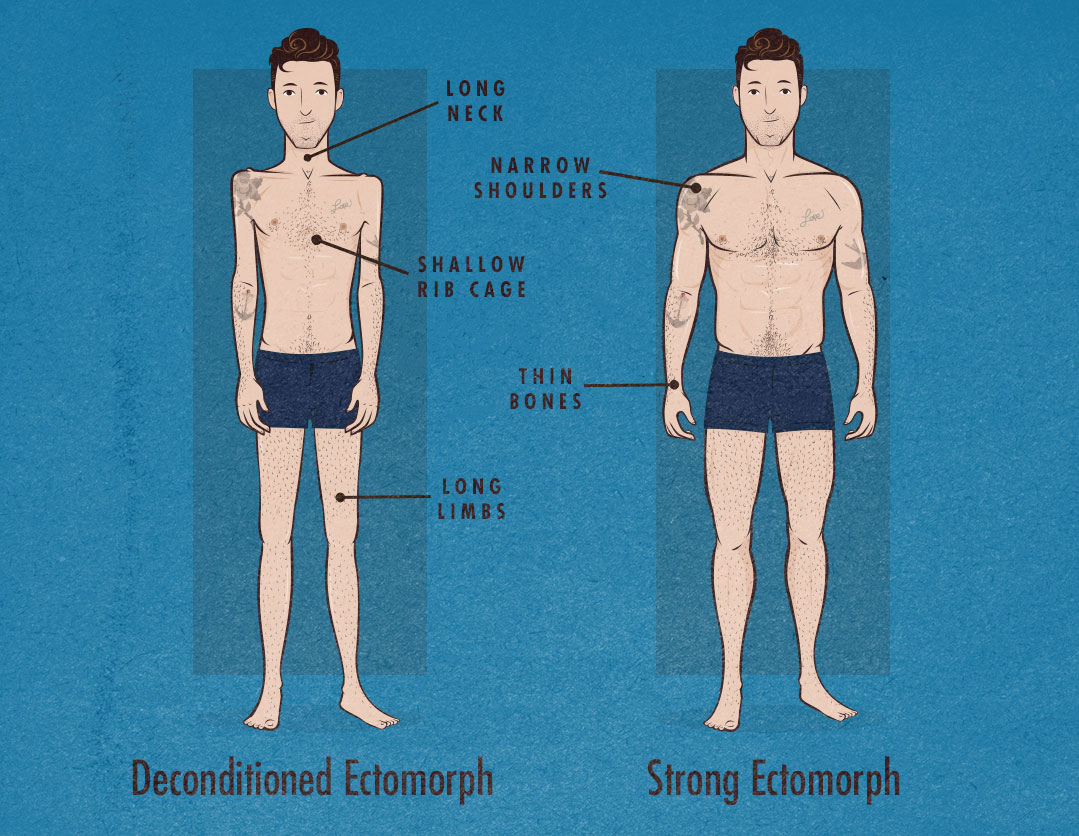
Ectomorphs are taller and lighter with proportionally thinner bone structures and rectangular body shapes. Most skinny guys are ectomorphs, but not all ectomorphs are skinny. Being an ectomorph has more to do with our bone structures and proportions than our muscularity. (If you’re curious about how much of an ectomorph you are, here’s how to measure your bone structure.)
It seems that as people grow taller, our limbs grow in length a little more quickly than they grow in circumference (study). This could at least partially explain why taller ectomorphs have proportionally longer and thinner bones. For example, I’m 6’2 but have the wrist size of a 5’4 man. A less extreme ectomorph might be 6′ and have the wrist size of a 5’8 man. Or a short ectomorph might be 5’6 but have the wrist size of a 5’2 man.
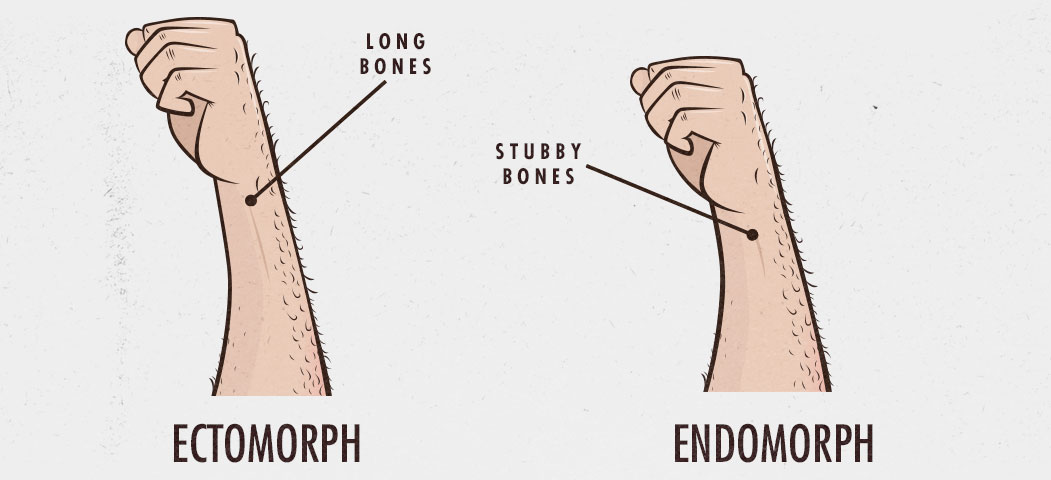
Having narrower bones limits how muscular we can become, so this will often get us pegged as “hardgainers.” However, that’s a misnomer. The rate at which people can build muscle is mostly determined by how far away from our genetic muscular potential we are. Since ectomorphs tend to start out thinner, that puts us further away from our genetic ceiling.
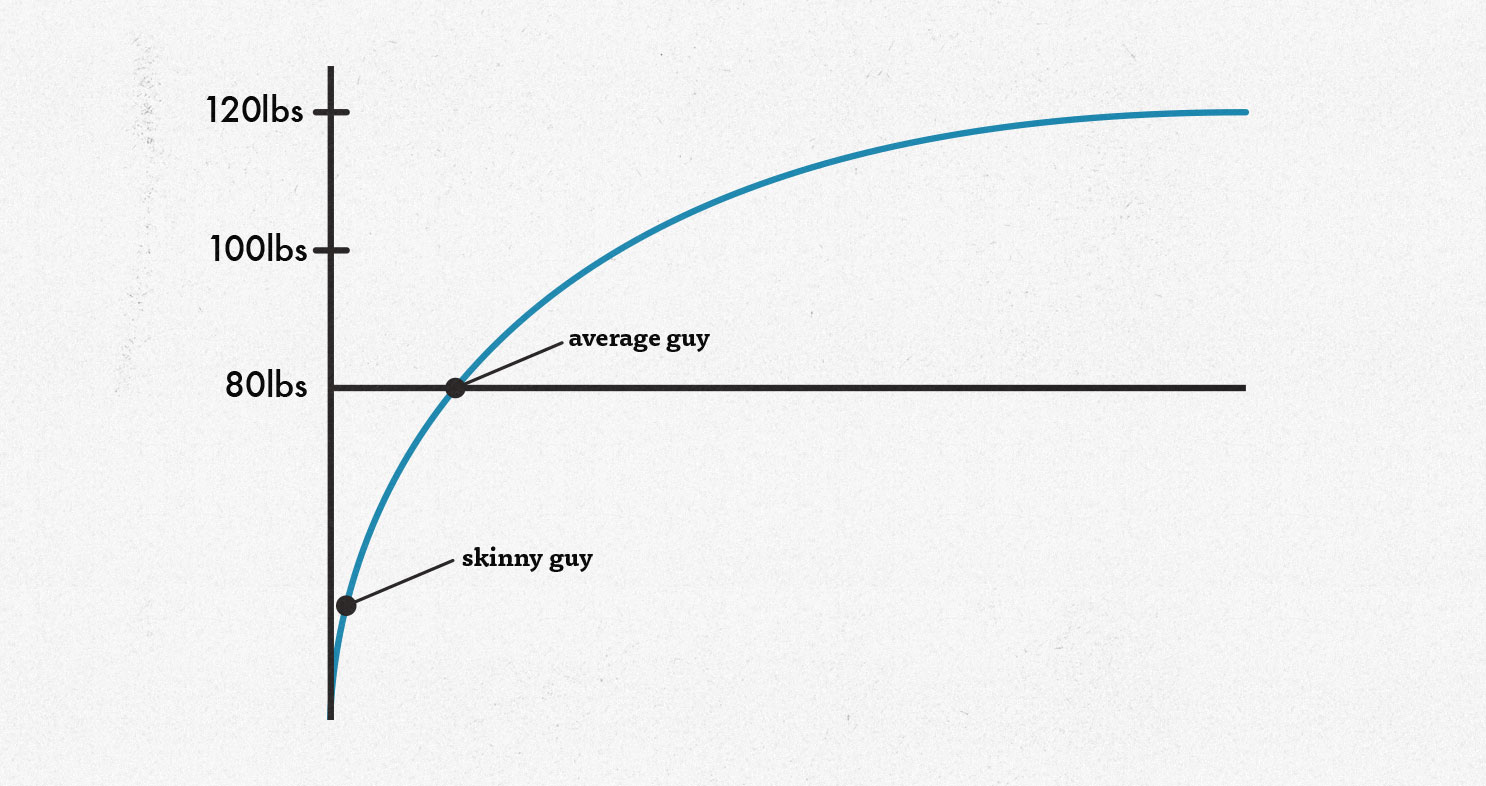
For instance, the average man starts off with around eighty pounds of muscle mass. Ectomorphs often start off with far less. If we’re only starting off with, say, forty pounds of muscle mass, then we’re starting behind the starting line and can expect to build muscle quite fast until we get closer to our genetic muscular potential. This period of rapid growth is often called “newbie gains.”
The same is true with strength. Ectomorphs tend to have longer limbs, lankier arms, and thinner torsos, giving us bodies that are harder to control and harder to stabilize. But that also gives us more room for muscle growth on our frames. We aren’t weak because we’re ectomorphs, we’re just starting off weak because we haven’t built much muscle yet. Fortunately, since we’re able to gain muscle quite quickly, we’re also able to gain strength quite quickly. In fact, we can often catch up to the other body types within a year or two.
What’s the Best Workout for Ectomorphs?
Ectomorphs tend to excel at cardio. Not because of our height—most marathon runners are actually pretty short—but because of a few other reasons:
- Our frames are proportionally lighter.
- Our limbs are proportionally longer.
- We have less fat to insulate us, allowing us to do cardio without overheating as easily.
- We have more surface area per unit of face, allowing us to radiate more heat outwards, again allowing us to avoid overheating during our training.
- We aren’t carrying around (as much) extra body fat.
Our cardiovascular health is often better than average as well, given our lower body-fat percentages. Our metabolisms are usually quite high, helping us resist fat gains and ward off heart disease, and we’re often more active than the other body types, even when we aren’t trying to be, because of something called non-exercise activity thermogenesis (NEAT). More colloquially, you could say that we’re often fidgety or restless, causing us to burn a startling amount of calories without even realizing it.
However, while our hearts are strong, our bones and muscles are not. While we can quite literally run a wildebeest into the ground, we may have quite a lot of trouble picking it up afterwards.
Fortunately, this can be remedied with weight training, eating a bulking diet, and getting enough quality sleep. That doesn’t mean that we should avoid cardio or anything. Cardio is still important for ectomorphs, and keeping ourselves fit can help us to build muscle more leanly, especially if you’re skinny-fat. It’s just that it’s also important to train for muscle size and strength. And if we only have enough time to do one type of training, it might make sense to start with weight training.
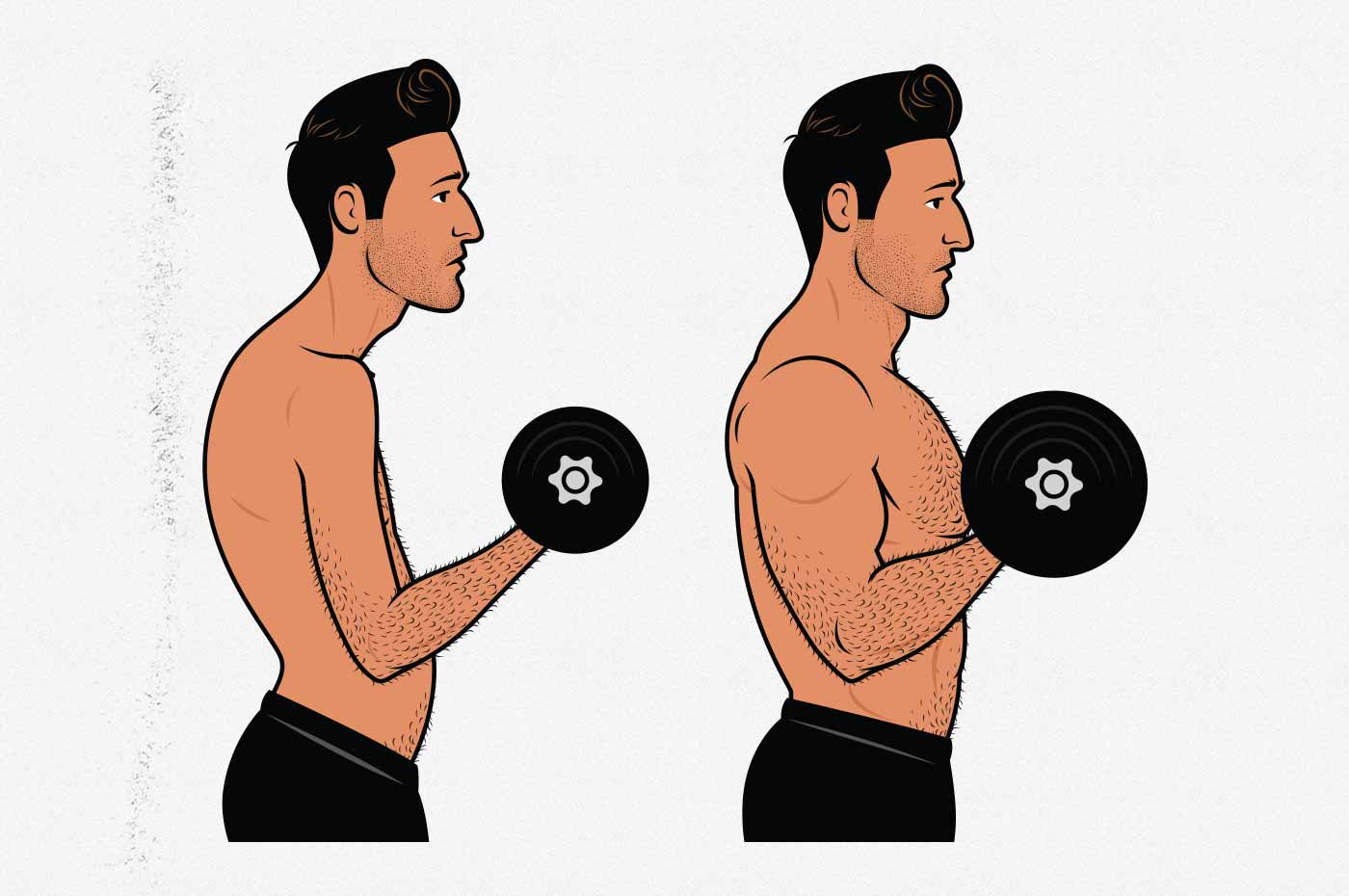
That isn’t to say that weight training will be easy, though. Most strength training programs are rooted in powerlifting, and most of those lifts are designed with stockier men in mind. That isn’t to say that we can’t squat, bench, and deadlift, it’s just that our anthropometrics might make those lifts look a little bit different.
get the google spreadsheet of the
free beginner’s full-body workout

Get the workout as a Google spreadsheet. You’ll be able to pick from exercise alternatives, fill out the sheet, and get our beginner’s warm-up.
Plus, we’ll make sure you’re on the b2B newsletter, and send you all of our best muscle-building content.
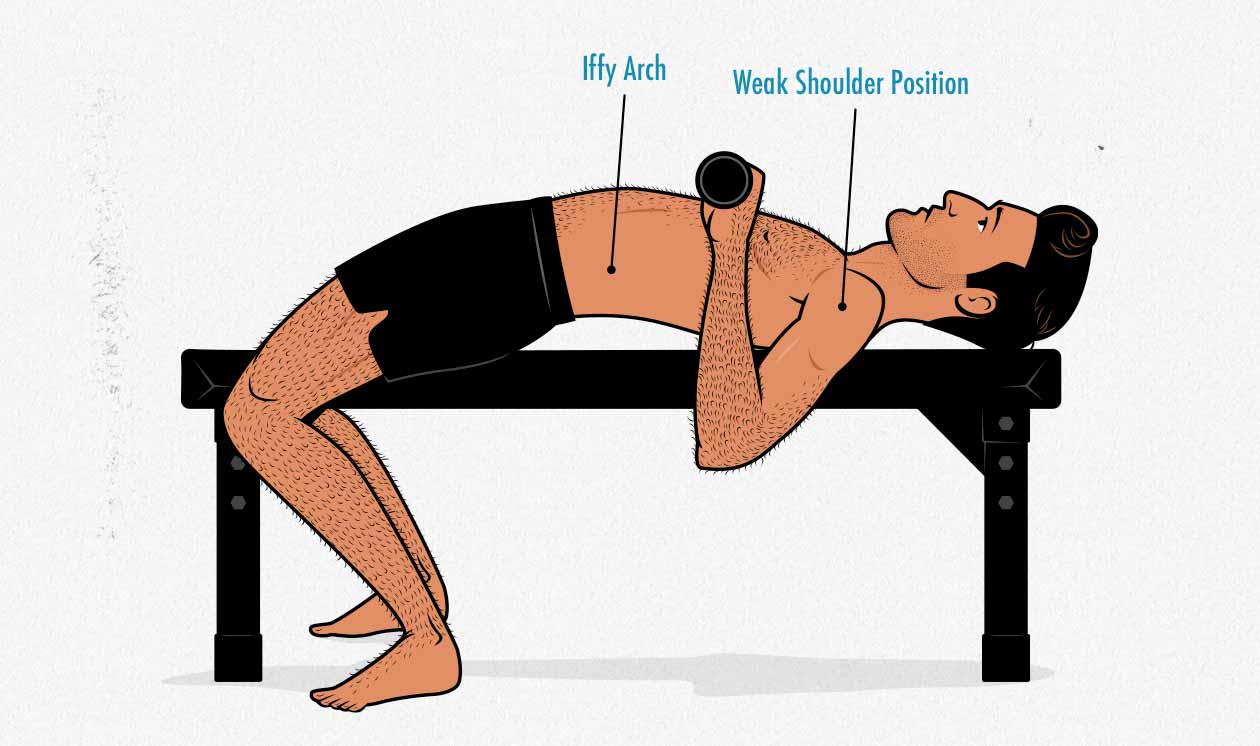
Some lifts will be harder because of our proportions, too. For instance, having lanky arms and a thin ribcage can make it much harder to learn how to do the bench press properly. But we also have other lifts, such as the deadlift, that favour our longer reach and relative lightness. There are even lifting techniques, like the hook grip, that work especially well for guys with longer and thinner fingers.
- Here’s our article about how to lift weights with ectomorph proportions.
- Here’s our article about how to train for muscle size.
- Here’s our article about how to combine cardio with bulking.
- How to build a stubborn chest.
- How to build broader shoulders.
- How to get abs as a skinny Guy.
What’s the Best Diet for Ectomorphs?
Keep in mind that the body types are just loose approximations and that there’s no single best diet for any particular body type. Even so, ectomorphs often have higher metabolisms (from NEAT), better insulin sensitivity (due to lower body-fat percentages), and we’re often eager to lift weights, build muscle, and gain weight. As a result, we often benefit from higher carbohydrate intakes, getting 50–60% of our calories from carbs, given that carbs help with muscle growth and getting into a calorie surplus.
Because of our smaller appetites, rampaging metabolisms, and higher calorie goals, we don’t need to focus as much on choosing nutrient-dense foods as the other body types. It’s often better to think about eating more good food, not eating less bad food. Otherwise, it can become too hard to eat enough calories to build muscle and gain weight.
While a lot of endomorphs have success with skipping breakfast, we often benefit from taking the opposite approach. Instead of breakfast, lunch and dinner, ectomorphs may want to eat more like a hobbit—breakfast, second breakfast, lunch, second lunch, etc. These in-betweener meals don’t need to be fancy or schedule-breaking, though. A handful of trail mix, a protein shake, or a pint of milk is perfectly fine.
On that note, while the other body types might benefit from foods that are lower in calories, we tend to thrive on higher-calorie foods such as dried fruit, nuts, bananas, rice, cheese, dark chocolate, muesli, and trail mix.
We do well with liquid calories, too, which aren’t as filling and digest more quickly than solid foods. Smoothies, milk, protein shakes, and even juice are great when trying to bulk up leanly.
get our bulking recipes—smoothies, snack, & protein balls
4 free bulking recipes

Get four bulking recipes in a downloadable PDF file. Get the full explanation, ingredient list, macros, and steps to follow.
Plus, we’ll make sure you’re on the b2B newsletter, and send you all of our best muscle-building content.
Here are some articles you might like:
- Why it’s so hard to gain weight as an ectomorph?
- How to eat more calories
- The best bulking foods
- The best bulking supplements for ectomorphs
And, of course, if you want a full workout routine and bulking diet for ectomorphs, that’s our specialty. Check out our Bony to Beastly Bulking Program.
Common Questions
Does Being Skinny-fat Mean That I’m Part Endomorph?
Probably not. While it’s easier for some men than others, any body type can gain fat. Endomorphs, with their shorter, thicker bones, wouldn’t be calling themselves skinny-fat, just fat. If you’re describing yourself as skinny-fat, it doesn’t sound like you have a naturally thicker, endomorph body. Sounds more like you’re an out-of-shape ectomorph.
Speaking of which, we’ve got a guide for skinny-fat guys here.
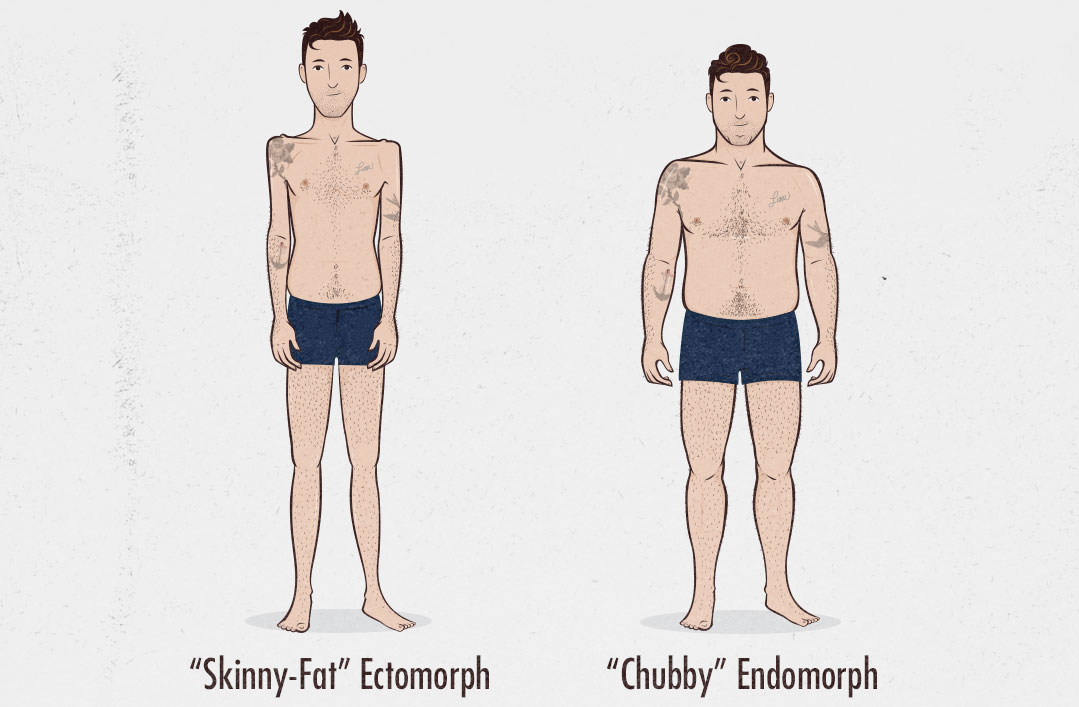
Are Some Ectomorphs Short?
In the Bony to Beastly community, we noticed that a lot of our members seemed fairly tall. One of our members started up a poll, and it turns out that the average height of a b2B member is around 6′ tall. Still, though, that’s just an average. We have ectomorphs who are 5’2 all the way up to 6’10.
For another example, most elite marathon runners are short ectomorphs, averaging 5’7 or so. It’s just that their bone thickness might be similar to men who are even shorter. They’re taller than their bone size would have you think, you could say.
Hafþór Júlíus Björnsson (The Mountain on Game of Thrones) is an incredibly strong 6’9 endomorph. Here he is next to Pedro Pascal (Oberyn Martel), who is of fairly average ectomorph height—5’11.

You can see how Björnsson, even though he’s incredibly tall, still has proportionally thicker bones, longer muscle bellies, a thicker neck, and even a proportionally bigger head. He’s like a giant Ed Coan.
Is it Possible to Increase Our Wrist Thickess?
There are no muscle bellies around your wrists, just tendons. They have no muscular growth potential. In fact, looking at your wrists is a great way to tell what body type you are because they cannot be changed with exercise—at least not in any significant way. This is why wrist circumference is often used to determine our body type.
The more interesting question is whether you can make your bones thicker by progressively lifting heavier weights. Unfortunately, assuming you’re past puberty, the main way your bones will respond to weightlifting is by growing denser, not thicker.
Some research shows that our wrist bones can grow a little bit thicker from lifting weights, but it’s a small change that isn’t likely to be noticeable.
Are Ectomorphs and Hardgainers the same Thing?
Technically, no. But in practice, usually yes. The word “hardgainer” is typically used to describe someone who has a hard time gaining weight. This describes most ectomorphs, as most of us will struggle to eat enough calories to gain weight.
The word “ectomorph,” on the other hand, usually refers to bone structure. So you could imagine a guy with thin bones who has a large appetite. He’d be an ectomorph but not a hardgainer. They’re rare, but they exist.
Calling ourselves hardgainers is a little misleading, though. Having a hard time eating enough calories to gain weight doesn’t mean that we’re bad at building muscle. In fact, we can often gain muscle more quickly than other body types.
Ectomorphs are often able to gain weight so quickly because we have an exaggerated newbie gains stage. Everyone’s results will vary, and not all weight gain is muscle, but some ectomorphs are able to gain up to forty pounds within just their first year of lifting. (You can see examples of ectomorph transformations here.)
Key Takeaways
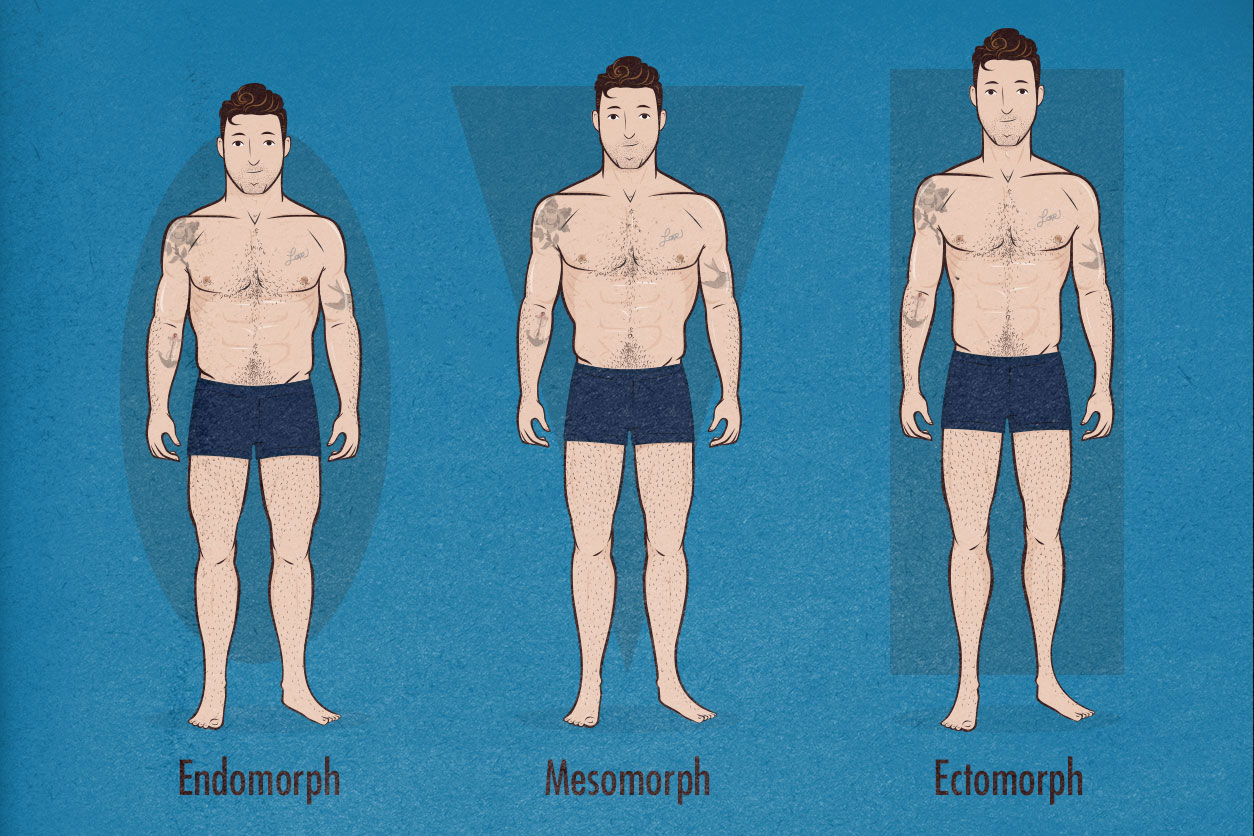
The male body types are rooted in disproven psychology research. Nowadays, endomorphs, mesomorphs, and ectomorphs are terms that are mainly used in bodybuilding. They aren’t scientific terms, just colloquial terms used to describe people with different genetics, struggles, and goals.
Whichever body type you happen to have been born with, all of them can be perfectly strong, healthy, and attractive. The path there is just a little different for everyone. Endomorphs often have to fight to become fitter while trying to curb their appetites—cutting. Ectomorphs often need to focus on gaining muscle size while scheming up ways to eat more—bulking. Mesomorphs who aren’t overweight or underweight have more freedom with their diet and workouts, but they still need to exercise and eat well, just like the other body types.
Most of all, keep in mind that everyone’s body is a bit different. The body types are just loose generalizations. This article might give you hints about your body type, but you’ll still need personal experimentation.
Muscle-Building Mini-Course via Email
Sign up for our 5-part muscle-building mini-course that covers everything you need to know about:
- Hardgainer genetics and how to make the most of them.
- How to take a minimalist approach to building muscle while still getting great results.
- What you need to know about aesthetics, health and strength while muscling up.



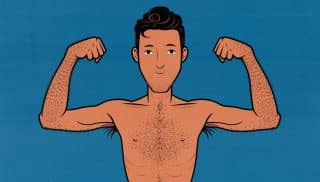
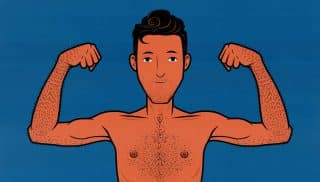
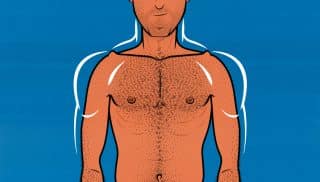
I am an ecto/mesomorph, due to myself being fairly thin but with very low amount of fat compared to muscle. I am having a difficult time trying to increase my forearm muscle (so my lower arm doesn’t look like a twig). Is there any way to improve your forearm muscle size/lenth?
Hey Orrin, being an ectomorph/mesomorph is a pretty rad combo of body types for bulking up.
There’s no way to change the ratio of your forearm muscle bellies to your forearm tendons, so the length of your forearm muscles will always look about the same. There are a lot of ways to change the size of your forearms, though. My favourite way is to work your way up to a heavy deadlift and heavy farmer carry, but your forearms will get trained with nearly every pull movement—chin-ups, rows, etc. Then adding in some reverse curls will add a bit of extra bulk. For most of us, that will do just fine for giving us proportionally muscular forearms that work well for what we need them for. But if that’s not enough, you could get yourself some “Fat Gripz” and practice farmer carries and rows with those. If even that is not enough, you could do forearm curls and extensions, but I don’t think you’ll need to go that far.
You can’t really make it longer. Your muscle bellies are the length that they are. You can make your forearm muscles thicker though, by adding more direct volume, as any muscle. So you’d want to add in exercises that directly work them. But since they are smaller muscles by nature, it’ll be hard to grow them compared to other bigger muscles in your body, so you may not want to sink too much time and effort into it.
Hah, nice timing!
So is the guarantee 20 lbs in 3 months or 5 months? I’m very interested since there’s a guarantee, but if you can’t cancel past 60 days (I think I saw that) I’m wondering how I’ll have time to know if it’s working
Hey Kurt, glad to hear you’re interested!
We teach you how to do both. If you’re skinny, a beginner and naturally fairly lean—an untrained ectomorph–you can gain around 2 pounds per week leanly for your first 5–10 weeks, and then 1 pound every week after that. You’ll hit 20+ pounds in 3 months. That’s where our guarantee came from: helping skinny guys gain 20+ pounds in 3 months.
But if you’re more advanced, more naturally skinny-fat, and/or have more muscle already, you won’t be able to get those crazy newbie gains. Well, not quite, anyway. In that case, we recommend gaining a max of around 1 pound per week. 1 pound per week for 20 weeks = 20 pounds in 5 months. We guarantee that as well.
As for how to know if it’s working, you’ll be gaining 1–2 pounds on the scale every week like clockwork. If you hit a snag and one week you don’t gain anything, we’ll coach you into fixing it for the next week. So after 60 days you’ll be 2/3 of the way there if you’re going for 20 pounds in 90 days. You’ll also see everyone else in the community doing great at all stages 🙂
Does that help / answer your question?
Great articles guys, really looking forward to reading 2 articles a month.
This is pretty unrelated but I was wondering what you guys think about scales that measure body fat percentage?
I have a set of scales that use electrical impulses that are used to estimate body fat and I was wondering if I should pay attention to the increase in body fat shown on the scales, e.g they say my bf% has increased from 5 to 10% when putting on 15lb and my waist measurement has only increased by half an inch.
Could this % change be caused by other things e.g glycogen storage?
Thanks my beastly dudes.
Yeah, lots of factors can play into it. You can minimize some of them by following the instructions to a T, but hardly anyone does that.
Sounds to me like you gained pretty leanly and the scale is just being a bit of a downer. The same thing happens to me, no matter how leanly I bulk. Then I was reading the instructions on the app that came with my scale and they were saying that for guys with lower body fat percentages and/or muscle mass, you had to use the “athlete” setting so that it knew to account for more of the weight gain/loss being muscle?
I think you can track your fat gains more accurately visually than with a BIA scale. Your waist is similar in size, and even with a totally lean gain, your waist size will increase a little bit as your ab and lower back muscles grow. How do your abs look?
I agree man, my abs look roughly the same I think, probably some fat gain but thats to be expected, so I think I’ll just keep doing what I’m doing.
Thanks Shane
Here’s a weird perspective. When I joined b2b I thought I was an ectomorph because I always thought I had a tiny appetite, didn’t eat many meals growing up, and never did sports. But then after I started working out, and saw my body proportions, I realized I was an endomorph, at just 5’3″. So I’m not really sure if my small appetite just fits my small size, and it was just the plates that were too big for me all along. Or maybe some endomorphs just don’t have big appetites… I feel like I don’t have to go overboard on calories to gain weight.
Hmm. That’s rare to have your body type do a total flip like that. Maybe part ectomorph, part endomorph?
I’m not sure I was ever an ectomorph, I just was never active or ate a lot. Being very short kept me from feeling like I could compete at sports, so I gravitated towards sedentary activities. And I guess there are so many other psychological factors that make someone turn into an athlete or not.
Too bad I didn’t start weight training back then! It seems like from what you say in this article I would have had a big advantage.
Since I have very short limbs, I don’t think I could ever be called an ectomorph.
Hi,
My left arm has always lagged behind my right arm and the picture with the tendons made me think that perhaps my left arm has a long tendon whereas my right arm a short one.
Is this possible?
Hey Sanoj, check out this article about how to test how ectomorphic you are. There’s a guide there about how to test the length of your muscle bellies and tendons. You’d just perform the test on both arms and then compare 🙂
(If you do find a discrepancy, don’t be too alarmed. That kind of asymmetry isn’t all too uncommon.)
Hi Shane Duquette,my name is Craig.I’ve always wanted bulk up,and I’ve always tired to work out at home but I always fall off doing it.I’m an Ectomorph Mesomorph too,and I want to bulk up by the summer time.I have 2 15 pound handheld weights at home,a pull up bar/push up that I can attach to the door and that’s it.Is there any way I can bulk up ? And as this article seems to kind of bring out,I kind of hate having to eat a ton of stuff to pack on calories.S o is there any help you could give ? And I love this webstite,I’m going to check out more stuff to help.
Hey Craig,
You’ll likely need heavier weights to continue to push your body to grow. We normally recommend our guys to have 2 heavy adjustable dumbbells and a bench. You can get great results with that minimal of equipment. We can help with the step-by-step with our program that you can check out here. Eating more than your daily needs is always going to be tough, but there are a lot of ways to make it easier such as liquid calories, and dried fruits. We cover lots of options to make it easier in our program 🙂
Ok, thanks a lot for the reply.
Is this information generally the same for ladies?
Hey Carly,
I’ll let Shane answer that soon. But we’ll likely write a similar article on our sister site, Bony to Bombshell, which you might enjoy. If you sign up for the newsletter, you’ll get an update whenever we post a new article.
The body types are sort of the same for women. A thicker-boned, more pear-shaped woman with narrow shoulders and wider hips would be an endomorph. A woman with an athletic v-taper, where she has broad shoulders and narrower hips, would be a mesomorph. A woman who’s longer and narrower overall would be an ectomorph. But what about the woman with the hourglass shape? She has both the broad shoulders of a mesomorph and the wide hips of an endomorph.
So I think you could make a good case for using pear (endomorph), narrow (banana/ectomorph), athletic (mesomorph/inverted triangle) and hourglass.
For more, we’ve got an article that goes into the female body types here.
Guys I love the site and this is all really interesting. I have a question which I think is going to seem daft, but, it’s a major hang up of mine. I’m 6ft 2, out of shape ectomorph and my wrists and particularly hands are so boney and fragile it kills me. I’m super conscious of it. Wrist is 6.5 inches, my hands are the main issue, so skinny, I think I read the hand circumference of mayweather and it’s a similar size. It just looks awkward as hell with my height. So, whilst I know you can’t ‘grow’ your hands, fingers or wrist bones did you guys see any beefier / thicker hands / wrists from intense training?
I feel you.
I have long fingers with knobby knuckles. My dad gave me his old ring, and while it was a real struggle to get it over my knuckle, once it was on the other side, it was so loose that it would spin around. But now that I’ve gained some weight, there’s enough meat under my knuckles that the ring doesn’t spin around anymore. So based on my own experience, yes, your hands will change quite a lot.
I’m not sure whether this has more to do with the training or more to do with simply gaining quite a lot of lean weight, causing everything to beef up.
Your wrists will stay about the same size, but when paired with stronger forearms and hands, they won’t look as bony anymore.
I understand your stance on IF for skinny guys, it’s really unnecessary and won’t do much for an ectomorph bulking. But nonetheless, I have a question concerning IF for hardgainers. So say I do the classic IF scheme, with an 8 hour feeding window, from noon -8pm. Fasting otherwise.
I totally understand the concept behind 1g pro per lb of bodyweight, eating sufficient calories, and progressing in the gym. So say all of these factors are on point. And in my case, they are. But as a hardgainer, here’s where the dilemma lies…
There are some who make a big deal of one’s body going into catabolic phases, specifically muscle breakdown throughout the night, unless fed properly. Especially for ectomorphs, it’s frequently recommended to eat a slow digesting meal before bed, and upon rising the next morning, to shuttle in some calories and fast protein to combat muscle breakdown ASAP.
In my opinion, this is a false claim perpetuated by the supplement industry OR it’s a true claim that a hardgainer should implement. But which?
Assuming total calories, sufficient protein (3x daily in feeding window), and gym progression are all on point, is letting my body go without food/energy for 16 HOURS every single day really a good idea for an ectomorph that wants to build MAXIMAL muscle each week? Or would this negatively impact muscle growth? I can see how it’d make sense for a meso/endo or someone trying to lose some fat, but what about a lean ecto trying to gain muscle?
Sidenote: Another reason I ask is because not eating breakfast actually helps me feel hyperfocused getting work done in the morning, AND I don’t mind training fasted at all, actually prefer it sometimes.
The main point is if it’s detrimental in a bulking ectomorph’s case, if it would impede maximum muscle synthesis? Is there any truth to the body needing protein/calories quickly in the morning to halt catabolism?
Hey Nathan, that’s a great question.
It’s an exaggerated claim that you need to stress about your muscles breaking down like that. Our muscles are more resilient than we think. But remember that you aren’t just trying to stay the same, you’re trying to grow. So we do, in fact, need to focus on pumping up the muscle protein synthesis while minimizing the breakdown. That’s what’s going to give us the growth that we want.
One important part of that is eating protein fairly regularly. Eating 20+ grams of protein 4–5 times per day with a few hours between each meal is ideal. So to make the most of that, yes, you’ll want to have a meal after waking up and a meal before going to bed. You can wait an hour or 2 after waking up, or leave an hour or 2 after your last meal before going to bed… but generally you want to start eating early and have your last meal fairly late.
You can use supplements to help, but you really don’t have to. You can have some eggs for breakfast, some greek yoghurt with some berries before bed. If you wanted to do intermittent fasting (IF), that’s where supplements come in. Guys who want to bulk optimally while intermittent fasting will usually having some BCAAs instead of breakfast to stimulate muscle protein synthesis. In that case, the main downside to intermittent fasting would be that it’s not great for appetite management, which is a huge issue for a lot of us naturally skinny guys. It might not be an issue for you, though.
To get 3 meals in during your feeding window, you’d be having one meal at hour 0, another at hour 4, another at hour 8? That’s not bad. Not ideal, since you’re missing some opportunities for extra growth there, but definitely not bad.
Strength training fasted works quite well, but mass-gain workouts tend to be higher in volume, higher in reps, and often work out better when we have more carbs/calories in our system. That’s not a hard and fast rule, though.
What I’ve been playing with, and recommending to a few members, is to do a modified “ectomorph fast.” You’d wake up and have a small breakfast. The only rule is that it must contain 20+ grams of protein, but some complex carbs seem to help also, at least in my case. So that could be as simple as a Quest bar (my go-to in a pinch), or a protein shake, or some greek yoghurt with berries, some cottage cheese with a little jam, or a fruit/protein smoothie. I’ll have a big latte and some fruit sometimes (which isn’t quite 20 grams of protein, but I’m not bulking right now). In my own experience, that gives me better focus than IF and it doesn’t mess up my overall intake for the day.
Interestingly, when Jared was doing research into optimizing energy levels throughout the day, this trick that we had naturally stumbled upon in the community seemed to have some wisdom behind it: a light breakfast with protein and complex carbs seemed to be ideal for energy levels.
Shane, this makes sense. I’m going to take your recommendations and construct a new diet schedule. This actually sounds rad! I’m excited to implement it!
By the way, what’s your recipe for a good latte? I could see myself being all about that latte life during these “ectomorph fasts” haha. Just add a carb side and another small protein source to get that 20+.
Thanks Shane!
Excellent. Let me know what you think once you try it!
My lattes are pretty classic. I happen to live on top of a local coffee place, so I just run downstairs and get the largest size latte that they have. Whole milk + 2 shots espresso. I make my own sometimes, but it’s hard to make enough milk for a truly large latte with my little espresso machine. I’ll usually use my own machine for a mid-day espresso or Americano, not for a breakfast latte.
[…] Keep in mind that these are just generalizations. Someone like Shane is still quite ectomorphic (long limbs, tiny stomach, thin bones, etc.) but can also end up with long clavicles. If you’re curious about different body types, we have an article here on the differences between somatotypes. […]
I used to be skinny…then skinny fat in my late teens….and now I’m chubby.. (and 28) ..how can you explain this…..
I know a ton of skinny guys who became skinny-fat and then chubby and fat..
When you’re a teenager your body is using surplus calories to grow taller. If you keep eating in a surplus once you’ve finished growing taller… you’ll grow wider.
The teenage life often involves lots of walking, running, standing, playing, etc. Calories are burned off. Adult life tends to involve a lot more driving and sitting. Calories are stored.
Teenagers often eat meals prepared by their parents. Young adults often move away, forcing them to prepare their own food. That food isn’t always the same.
And the longer you live an unhealthy lifestyle, the greater a toll it takes on your body. The negative changes accumulate over time.
Lots of reasons. Those are just a few common ones.
The good news is that fat can be lost, and muscle can be gained. I think you and your acquaintances could do a great job of building lean, powerful bodies 🙂
I’m all over this chart. I used to be fat, so my lower body is thick and I have 34″ hips, but I also have 44″ girl shoulders and 9″ forearms. And my chest is 40″. I’m 5’7″ and 170lbs right now, haven’t touched weights in years, always felt shitty about my body.
What I’ve found personally, and what we hear a lot in the community, is that most proportion problems can be solved by improving your body composition. As you add muscle and remove fat, you begin being shaped more by your muscle mass—which you have quite a bit of control over—instead of your bone structure and body fat storage patterns, which you have almost no control over. So I wouldn’t give up on lifting weights (or nutrition)!
So that settles it! I’m a mesomorph, despite thinking I was an ectomorph for years (I was a skinny soccer player with no upper body). I’m 5’7″ with wrists at about 6.75-7 inches (which is fairly average at my size), 2 fingers for arm muscle belly insertions, 157 pounds with 13.5% body fat, with a slim 29 inch waist and 44 inch shoulders, putting me at about a 1.5 ratio (in circumferences), but I’m only 7 months into training, so that will change. Overall, I’m pretty happy with my genetics. I once despaired at being short, but I’ve realized it’s a boon for bodybuilding. And I’m glad I’m not a short endomorph either, like my 5’9 (not really short) brother, though he has wide shoulders to go with those wide hips, so win some lose some. I heard somewhere that the shorter you are the more naturally coordinated you are, and as a mesomorph (good shape and not under-muscled or chubby), maybe I’m in the best genetic condition for this. This is is really motivating. I follow Jeff Nippard because he’s a great example for my (possible?) genetic potential as a short mesomorph. All this to say, I don’t intend anything bad to ectomorphs. I have a 6’1 ectomorph friend who struggles to put muscle on his frame, and requires a hefty 3500 calories daily whereas I’m only needing 2200. However, he gets to stay at a cut 5% bodyfat ALL THE TIME which I could never dream of achieving. It finally makes sense why all Abercrombie models are all like 6’2 shredded ectomorphs because that’s an ectomorph’s specialty, and their secret weapon no doubt. You guys are basically doing cardio 24/7, just on a biological level. I just don’t have time for that.
By the way, in some other article of yours you said Brock Lesnar was a mesomorph, and I don’t think that at all. He strikes me as a classic endomorph. The wide hips give it away (which usually gives away any endomorph). I like all your stuff and already have directly my ectomorph friend here. He’s very attentive nutritionally speaking (as am I) and loves the science.
I found this article funny because my siblings are nothing like me. My brother is a 5’9 endomorph at 200 pounds who can’t lose weight and my 5’4 soccer player sister is an ectomorph with a very rectangular body and, despite being the fastest and most athletic in our family (runner’s build I suppose) has trouble gaining muscle and has always weighed very little (15% body fat for a woman!!). I’ll redirect her to your bony to bombshell website, which is really cool. Have a wonderful day.
I think I’d best best described as an ectomorph, who through good diet and weight training is slowly transitioning towards being a mesomorph.
I’m 6’1″ and before deciding to get in shape I was 170lb with 19% body fat according to the scale at my gym. I had a small belly and love handles and was definitely in the category of skinny-fat. I’m a bit broader than Shane, though – looking at the bone breadth test, I’m 17.5 inches at the shoulders and 13.5 inches at the hips (one of my fitter mates once kindly told me I have ‘child bearing hips’!). I also have long legs, long arms and a proportionally short torso.
Now after improving my diet and starting weight training, my weight went below 155lb, so I’ve been on a bulk these past few weeks. I’m a little over 160lb at the moment and significantly more muscular than I used to be, I’ve completely lost sight of my abs, so I’m going to try to cut a bit lower before bulking next time.
[…] to the trio at Bony to Beastly, short guys are built to throw weights around: lift them above your head, push them away from you, […]
You are overrating endomorphs and underrating ectomorphs and mesomrphs, endomorphs are crap fatasses and no noe likes them, they are weak, ectomorphs and mesomorphs are way stronger and more athletic.
[…] lean waist, then your bone structure won’t matter very much. Women don’t care about our body type, they care about whether we’re in shape or […]
[…] a naturally skinny guy. A so-called ectomorph. Puberty didn’t automatically plumpen my pecs, my shoulders never naturally grew wider, and my […]
[…] body types evolved for different purposes, giving us totally different strengths and […]
[…] It’s a mesomorphic trait to have broad shoulders and narrow hips (v-shaped physique), and it’s an endomorphic trait to have narrower shoulders and wider hips (pear-shaped physique). Ectomorphs tend to be shaped like a rectangle, with neither broad nor narrow shoulders. More on the male body types here. […]
[…] make your back much thicker when viewed from the side. This might not be a big deal for guys with a naturally stockier body type, but most ectomorphs have fairly skinny torsos by default. Bulking up our spinal erectors, then, is […]
[…] first of all, a person who is naturally skinny is called an ectomorph. It’s one of the three male body types. It’s an old term with a strange history, invented by the psychologist William Sheldon in the […]
[…] of talking about endomorphs, mesomorphs, and ectomorphs, let’s just talk directly about limb lengths, proportions, and stockiness, like […]
[…] to other body types, yes, ectomorphs start off with less muscle, but our genetics aren’t nearly as limiting as […]
[…] admit a bias here. As much as I hate identity politics, let’s be real, hares have a thinner body type. They’re ectomorphs. As Seth Godin would say, they’re part of our tribe. Tortoises are […]
Hello, I am 22 years old and my weight is 80kq, height is 1.86cm. I am an ectomorph but I don’t know which type. My shoulders are narrow, my neck is long, my chest is narrow and shallow (kind of pectus excavatum), and my arms and legs are long. And when I eat too much I get a big stomach but all the other parts are still thin and weak.
Hey Umid, it’s normal to get a big stomach after eating a big meal. That’s where all the food goes, after all. It’s often more noticeable with skinny guys because we have less muscle and fat to hide the extra bulge, but you’ll often hear about people needing to wear stretchy pants before going to buffets or needing to undo a button after a holiday meal.
If you have narrow shoulders and a shallow ribcage, long lanky arms, and if you have trouble gaining weight overall, then it sounds to me like you’re a fairly classic ectomorph, as are most readers here 🙂
This is a bit of an interesting thing because I disagree with what you write about endomorphs. I am a low endomorph (5’7 ”, currently 158 pounds). What you write about the ease of gaining muscle is IMHO, crap. After two years of training, I was a little stronger, my arms and legs were a little bigger, but that’s about it. No really visible changes, no figure worth the effort, time, money and energy.
That can absolutely happen. Everyone is different, and most people are a combination of different body types. Mesomorphs are the body type best known for building muscle easily, but an endomorph with thick bones should also be able to build muscle quite well. If you have thick bones and simultaneously have trouble building muscle, it may be that you aren’t training or eating very well for muscle growth. But anything is possible.
Politely speaking, I’m a bit sick of listening to strangers talking about my lack of progress without any knowledge about my training, diet, predispositions and opportunities. That I don’t train enough or other nonsense. The fact, that you are the lucky guy and have noticeable muscle gains or any other type of progress, doesn’t mean that any other will also have.
Hey Tom, I’m sorry.
My assumption is that when someone mentions their lack of progress in a comment, and when they know that my expertise is helping people build muscle, that they’re implying that they want some help.
I didn’t say that you don’t train enough. But you’re right that training and diet are the main factors that need to be adjusted when someone is having trouble making progress.
People adapt by building muscle under certain circumstances. Namely, when there’s an abundance of protein and food, and enough of a stressor to provoke an adaptation. So it really does come down to diet and exercise. There are plenty of other factors, such as sleep, genetics, stress, and so on. Some people do indeed build muscle faster than others, and sometimes that’s due to factors they have no control over. I’m not sure which factor is holding you back, you’re right.
I can agree with you at some point. But I’m afraid that the main factor of any success in bodybuilding (and other sport disciplines too) are genetic predispositions. If you don’t have ones, no matter how good is your diet, how rich the list of supplements, and how fitted your training is – you’ll never achieve good looking, muscled figure (or any other successes in other disciplines).
Back to my problem with progress: I’m still a novice although I’m not the youngest one. When I started to train I was 33. I was training for two years at the gym with a personal trainer and proper diet and (after closing the gyms due to the pandemic) half-year at home. AS I mentioned in the first post, after those two years there were little changes: a little bit larger arms, thighs and neck. There were also changes in the whole body strength too. But my figure didn’t change: shoulders were narrow, fat tissue on the belly was in place, the chest was small. I still looked like a potato. And I don’t know what I could do more.
We might be miscommunicating a bit here. This isn’t a site for elite bodybuilders. And we’re not trying to take people with world-class genetics and help them dominate a competitive sport. Marco has done that in the past. He used to make his living coaching athletes at a college, pro, and Olympic level. But now we work almost exclusively with regular people.
Can regular people build a lean and muscular physique that looks great? Hell yeah! Maybe you look more like Ryan Gosling in Crazy, Stupid Love than Phil Heath, but they still look damn awesome.
If someone is trying to look like you’re favourite fitness influencer or bodybuilder, they’re doing it wrong. Genetics play too large a role. Plus, there’s always the issue of performance-enhancing drugs. It’s much better to have realistic goals.
Now, what’s realistic? Is benching 405 pounds something most people can accomplish? No, you’d need elite genetics for that. What about 315 pounds? Probably, yes. That’s near the limit of what someone with average genetics can accomplish naturally with some hard work and smarts. What about 250 pounds? At this point, even with fairly bad genetics, this is a realistic goal for most men.
I don’t know what you were doing, how fast you were gaining strength, how much weigh you were gaining, or how your measurements were changing. Like you said, I don’t have enough information to give you good coaching advice.
Some thoughts:
If your muscle is covered by fat, the muscle might not be the problem. Even if you continue gradually gaining strength (which is a good indicator that you’re gradually gaining muscle) you may wind up looking chubby instead of strong. In that case, to notice the difference, you may need to lose the fat.
I’ve been lifting weights for around 10 years. I made most of my progress with around 2 years of hard work. The other 8 years, I barely made any progress. And it’s not that I reached my genetic limit early. I would gain 20 pounds in 3 months, plateau for the rest of the year. Gain another 20 pounds in 5 months, plateau for 2 years. Gain another 15 pounds in 7 months, plateau for 3 years. What was happening is that during those plateaus, I wasn’t pushing myself hard enough in the gym (i.e. doing enough to provoke growth) or in the kitchen (i.e. eating enough calories to grow). I was still lifting weights intelligently, and I was still eating a good diet, but it wasn’t enough to make any progress. It really takes quite a lot of disruption to make progress.
It’s possible to lift weights for a decade, eat a good diet, and still not get anywhere even close to your genetic potential. You need to have a few things in place to make progress, and it gets continually harder as you build more muscle.
Maybe I was misinterpreting something but my first impression was it’s another place on the Internet that tells people that everything is possible, just buy our training plans, use this diet regime, buy those supplements we advertise, etc.
For me, Ryan Gosling in that movie doesn’t look awesome, he looks rather average. And he’s much taller and has quite a different body type than me. 😛
After two years of gym training, my record on benching was about 175 pounds and on deadlift—310 pounds. I’ve never gained more than 10 pounds and most of the time my weight oscillated around 165 pounds. I think that I got all the results that were possible (training three times per week), given what I could afford timewise and financially. One notice: it’s not like I’m obese or something. Ever since I can remember, the fat tissue on my belly is quite thick, even when I was a rather skinny teenager weighing 130 pounds. No matter how much I dieted, did cardio and stuff, it was there. But generally, I’m not a fat person. And it’s not the cause of lack of gains in the chest or shoulders, I’m afraid.
To summarize, when I started training, I dreamed about a stunning muscular figure. Now, after costly failure in the gym and getting some more information about that, I don’t dream at all.
Maybe if I know other people with my body features that look really good, some motivation will come back.
I think that I grumbled enough here, but it’s really frustrating for me to read all that stuff like everybody can look good and aesthetic and when he doesn’t, it’s his fault.
If you think Ryan Gosling’s physique doesn’t look awesome enough, I don’t know what to tell you, man. Some people can look better than that, other people can’t. But that’s a great physique. If your bar is higher than that, I think the problem is the bar you’ve set for yourself.
I think you can get quite a bit stronger, more muscular, and leaner than you currently are. But that doesn’t mean that you OUGHT TO. It also doesn’t mean you’ll look like your favourite fitness model or win a powerlifting competition. But I bet you could bench 315 and deadlift 500. Maybe not. Maybe 250 and 435. It’s hard to say. But most people can gain quite a lot of muscle and strength. I wouldn’t be so quick to sell yourself short.
I’m not trying to tell anyone that anything is their fault. (Especially since I’m a determinist.) I’m just trying to tell people that their goals may indeed be within reach. And that most people can accomplish some pretty cool stuff. That isn’t to say you need to care about this stuff, though. That’s entirely up to you. I’m just here to help people who ask for help.
Maybe you’re right and my bar is too high for me. But I think (maybe I’m wrong) that if I want to look good for me, not like overgrown potato, barrel or dwarf, I should aim in something more than Gosling’s physique. Because of my height, wide hips and other body features. Worse body proportions and so on.
I know that I’ll never look like any fitness trainer or bodybuilder, that’s impossible. I just want to feel good with my body, like I never feel. And as a person with limited resources, I want to know is that worth investing again time, money and energy for something so unsure and unknown like my potential future physique. I don’t afraid of effort, sweat or tiredness. There are going to reopen gyms soon in where I live and I’m going to vaccinate myself, so theoretically I could back to training. But I’m too scared of the failure that I’ll stay with nothing again.
Oh, I didn’t mean your body could or should look like Ryan Gosling’s body specifically. I just threw out an example. Your body will always look like your body. It’s just that your body can look bigger, stronger, and leaner. What I meant was that his body-fat percentage and degree of muscularity are realistic for most people, and I’d say it looks totally rad.
The good news is that improving your physique doesn’t need to be that expensive. You could get a chin-up bar and some push-up handles, maybe a dumbbell or three. That’d have you covered. We have an article on bodyweight hypertrophy training here. Even a full barbell home gym, though expensive upfront, winds up being pretty affordable over a lifetime, especially if you get it used. And it sounds like you can go to the gym, so that’s perfect!
You don’t need any fancy supplements. That’s where most people spend a ton of money. You could get protein powder if it makes eating enough protein easier, but it’s not special. It’s just a source of protein. Aside from that, the best supplement is plain old creatine, which is dirt cheap.
The bad news is that, yeah, it takes time. It sounds like you’re already familiar with that. We recommend training at least 3x per week for the best results. The worse news is that even if you don’t want to improve your physique, you should be doing that anyway just for the sake of your general health. It doesn’t need to. be hypertrophy training, but some sort of strength training is important. Most health organizations recommend doing it at least 2x per week.
Improving your physique isn’t unsure or unknown. It’s a system. If you aren’t gaining strength, you adjust the inputs until you are. If you aren’t losing fat, you adjust the inputs until you are. It’s not like gambling, where it may or may not pay off.
But you do have a point that you won’t know EXACTLY how your physique will look. You’ll be bigger and leaner, but you don’t know quite what that will look like. It will look better, though.
To be fair, the most expenses were for personal training. As I mentioned, I’m still a noob in this field and rather won’t risk any serious injury just because I’ll do something poorly. The supplements (whey, creatine and pre-workout) and gym payments were a small part of the whole sum of spent money.
After the gyms got closed I trained for half a year at home. Or rather, I tried to train. I’ve bought some dumbbells, a curl barbell and even some resistance bands. I’ve bought also a training plan from my trainer and started to train. And it was horrible. First of all, home training is like… at home. There is always something to do at home, I couldn’t really focus on my exercises. And the focus was really important because I’ve got only a small room for my own use (I live in a flat). I thought that there is enough room for exercises but no: I had to continuously watch after my furniture or my cats to not hit them with weight or tape. To be careful not to drop the weight on the floor to avoid my rude neighbour from the lower floor or other damage. And at last: the time spent on it. I noticed that home training in that conditions takes much more time than its equivalent proceeded in the gym. My initial enthusiasm had dropped to the ground for that half a year. And surely, many people may think that these are only excuses, because they work out at home or garage or cellar, so I can too (I really saw this kind of comments).
I understand that Gosling’s physique was brought here as an example. But I cannot think about him as a good example. The body differences (height, body type) are so much that I can’t imagine myself with this type of body. Not even mention that he is a well-paid actor with the means to look like that if he wants and it’s a part of his job.
I wish I have this certainty about improving my physique. My previous experiences don’t allow me to see this in bright colours. I hope that you’re right but I’ll believe only when I’ll see results on my own.
Oh, and I wasn’t trying to imply that you need our specific program. We have an article on how to eat here, and here’s a simple workout program. That workout program isn’t anything magic. Plenty of good ones out there. But it’s a reasonable place to start.
Hey Shane, while reading your article and reading about the mesomorph, I was wondering…Don’t mesomorphs have round jutting chests as well? It was clear that they have wide shoulders, narrow hips and middling proportions, but I read in many other definitions that mesomorphs also have broad chests.
Yep! I think you’re right. The stereotypical mesomorph would have a thick, muscular torso with a barrel-shaped rib cage.
So then do endomorphs also have barrel-shaped chests? As you stated in the beginning of the article or do they have chests of medium shape considering that ectomorphs have shallow/flat chests/ribcage and mesomorphs have barrel-shaped/shaped jutting ribcages.
I think a classic endomorph would also have a barrel-shaped chest. But this is just me guessing, and there’s no precise list of characteristics. These body types are just a sort of shorthand to refer to people who are built differently. The vast majority of people are combinations of the different body types anyway.
Also, do all mesomorphs have barrel shaped ribcages/chests or is it only broader or more extreme mesomorphs with this trait?
And lastly do ectomorphs have narrow hips as well?
Ectomorphs tend to have narrow hips, yeah.